User:Dam Tuan Quynh/sandbox

Wikipedia is a free multilingual open-source wiki-based online encyclopedia edited and maintained by a community of volunteer editors, started on 15 January 2001 as an English-language encyclopedia. Non-English editions were soon created: the German and Catalan editions were created on circa 16 March,[1] the French edition was created on 23 March,[2] and the Swedish edition was created on 23 May.[3] As of May 2025, Wikipedia articles have been created in 356 editions, with 342 currently active and 14 closed.[4]
The Meta-Wiki language committee manages policies on creating new Wikimedia projects. To be eligible, a language must have a valid ISO 639 code, be "sufficiently unique", and have a "sufficient number of fluent users".[5]
Variations in editions
[edit]Wikipedia projects vary in how they divide dialects and variants. For example, the English Wikipedia includes most modern varieties of English including American English and British English.[6][7] Similarly, the Spanish Wikipedia includes both Peninsular Spanish and Latin American Spanish,[8] and the Portuguese Wikipedia includes both European Portuguese and Brazilian Portuguese.[9] In contrast, some languages have multiple Wikipedias. For example, Serbo-Croatian encompasses four Wikipedia editions, Serbo-Croatian and three different standardized varieties (Bosnian, Croatian, and Serbian).[10]
Additionally, some Wikipedia projects apply different approaches to orthography. For instance, the Chinese Wikipedia automatically transliterates between six standard forms: three using simplified Chinese characters (Mainland China, Malaysia, and Singapore) and three using traditional Chinese characters (Taiwan, Hong Kong, and Macau).[11][12] And rather than relying on transliteration, Belarusian has separate Wikipedia projects for the official Narkamaŭka and Taraškievica orthographies.[13]
Wikipedia edition codes
[edit]Each Wikipedia project has a code, which is used as a subdomain of wikipedia.org. The codes mostly conform to ISO 639-1 two-letter codes or ISO 639-3 three-letter codes, with preference given to a two-letter code if available.[14] For example, en stands for English in ISO 639-1, so the English Wikipedia is at en.wikipedia.org.
Wikipedia editions
[edit]Active editions
[edit]The table below lists all the active language editions of Wikipedia roughly sorted by the number of active users (registered users who have made at least one edit in the last thirty days).[15]
| Wikipedia name in English | Wikipedia name in native language | Language | Script (ISO 15924 code) | WP code | Articles | Active users | Launch date | Logo |
|---|---|---|---|---|---|---|---|---|
| English Wikipedia | English Wikipedia | English | Latn | en | 6,995,404 | 118,797 | 15 January 2001 |  |
| French Wikipedia | Wikipédia en français | French | Latn | fr | 2,684,729 | 17,583 | 23 March 2001 |  |
| German Wikipedia | Deutschsprachige Wikipedia | German | Latn | de | 3,016,351 | 16,992 | 16 March 2001 |  |
| Spanish Wikipedia | Wikipedia en español | Spanish | Latn | es | 2,034,545 | 13,466 | 20 May 2001 |  |
| Japanese Wikipedia | ウィキペディア日本語版 (Wikipedia nihongo-ban) | Japanese | Jpan | ja | 1,462,297 | 12,764 | 20 May 2001 |  |
| Russian Wikipedia | Русская Википедия (Russkaya Vikipediya) | Russian | Cyrl | ru | 2,045,543 | 8,756 | 20 May 2001 | 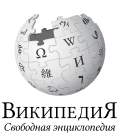 |
| Portuguese Wikipedia | Wikipédia em português | Portuguese | Latn | pt | 1,146,744 | 8,511 | 11 May 2001 |  |
| Italian Wikipedia | Wikipedia in italiano | Italian | Latn | it | 1,918,897 | 7,477 | 11 May 2001 |  |
| Chinese Wikipedia | Traditional Chinese: 中文維基百科, simplified Chinese: 中文维基百科 (pinyin: Zhōngwén wéijī bǎikē) | Chinese (written vernacular Chinese) | Hans/Hant | zh | 1,477,177 | 6,913 | 24 October 2002 |  |
| Persian Wikipedia | ویکیپدیای فارسی (Vikipediā-ye Fārsi) | Persian | Arab | fa | 1,039,364 | 4,790 | 19 December 2003 |  |
| Polish Wikipedia | Polskojęzyczna Wikipedia | Polish | Latn | pl | 1,658,027 | 4,154 | 26 June 2001 |  |
| Arabic Wikipedia | ويكيبيديا العربية (Wīkībīdiyā al-ʿarabiyya) | Arabic | Arab | ar | 1,263,101 | 3,841 | 8 July 2003 |  |
| Dutch Wikipedia | Nederlandstalige Wikipedia | Dutch | Latn | nl | 2,187,359 | 3,632 | 19 June 2001 | 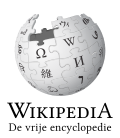 |
| Hebrew Wikipedia | ויקיפדיה העברית (Vikipedya ha-ivrit) | Hebrew | Hebr | he | 375,469 | 3,080 | 8 July 2003 | 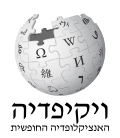 |
| Ukrainian Wikipedia | Українська Вікіпедія (Ukrainska Vikipediia) | Ukrainian | Cyrl | uk | 1,377,518 | 3,060 | 30 January 2004 |  |
| Norwegian Wikipedia (Bokmål) | Norsk Wikipedia | Norwegian (Bokmål) | Latn | no | 647,868 | 2,997 | 26 November 2001 |  |
| Indonesian Wikipedia | Wikipedia bahasa Indonesia | Indonesian | Latn | id | 729,502 | 2,981 | 30 March 2003 |  |
| Romanian Wikipedia | Wikipedia în limba română | Romanian | Latn | ro | 513,204 | 2,716 | 12 July 2003 | 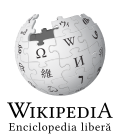 |
| Turkish Wikipedia | Türkçe Vikipedi | Turkish | Latn | tr | 635,775 | 2,583 | 5 December 2002 |  |
| Serbian Wikipedia | Википедија на српском језику (Vikipedija na srpskom jeziku) | Serbian | Cyrl/Latn | sr | 707,002 | 2,343 | 16 February 2003 |  |
| Czech Wikipedia | Česká Wikipedie | Czech | Latn | cs | 568,947 | 2,155 | 3 May 2002 |  |
| Swedish Wikipedia | Svenskspråkiga Wikipedia | Swedish | Latn | sv | 2,609,801 | 1,942 | 23 May 2001 | 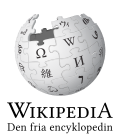 |
| Korean Wikipedia | 한국어 위키백과 (Hangugeo wikibaekgwa) | Korean | Hang | ko | 704,004 | 1,832 | 11 October 2002 |  |
| Danish Wikipedia | Dansk Wikipedia | Danish | Latn | da | 308,492 | 1,783 | 1 February 2002 |  |
| Simple English Wikipedia | Simple English Wikipedia | Simple English | Latn | simple | 269,144 | 1,710 | 18 September 2001 |  |
| Finnish Wikipedia | Suomenkielinen Wikipedia | Finnish | Latn | fi | 594,463 | 1,568 | 21 February 2002 |  |
| Hungarian Wikipedia | Magyar Wikipédia | Hungarian | Latn | hu | 557,403 | 1,414 | 8 July 2003 |  |
| Vietnamese Wikipedia | Wikipedia tiếng Việt | Vietnamese | Latn | vi | 1,294,388 | 1,228 | November 2002 (unknown day) |  |
| Catalan Wikipedia | Viquipèdia en català | Catalan | Latn | ca | 774,448 | 1,160 | 16 March 2001 |  |
| Thai Wikipedia | วิกิพีเดียภาษาไทย (Wi-ki-phi-dia pha-sa thai) | Thai | Thai | th | 173,896 | 1,144 | December 2003 (unknown day) |  |
| Bengali Wikipedia | বাংলা উইকিপিডিয়া (Bangla uikipiḍiẏa) | Bengali | Beng | bn | 169,575 | 1,114 | 27 January 2004 |  |
| Cantonese Wikipedia | Traditional Chinese: 粵文維基百科 (Jyutping: jyut6 man4 wai4 gei1 baak3 fo1) | Cantonese | Hant | zh-yue | 144,745 | 925 | 25 March 2006 |  |
| Greek Wikipedia | Ελληνική Βικιπαίδεια (Ellinikí Vikipaídeia) | Greek | Grek | el | 252,822 | 910 | 1 December 2002 |  |
| Estonian Wikipedia | Eestikeelne Vikipeedia | Estonian | Latn | et | 252,387 | 682 | 24 August 2002 |  |
| Swahili Wikipedia | Wikipedia ya Kiswahili | Swahili | Latn | sw | 98,817 | 661 | 8 March 2003 | 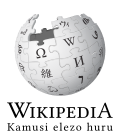 |
| Bulgarian Wikipedia | Българоезична Уикипедия (Bǎlgaroezična Uikipediya) | Bulgarian | Cyrl | bg | 303,993 | 653 | 6 December 2003 |  |
| Hindi Wikipedia | हिन्दी विकिपीडिया (Hindī vikipīḍiyā) | Hindi | Deva | hi | 165,407 | 620 | 11 July 2003 |  |
| Malay Wikipedia | Wikipedia Bahasa Melayu (ويکيڤيديا بهاس ملايو) | Malay | Latn | ms | 425,331 | 586 | 26 October 2002 |  |
| Azerbaijani Wikipedia | Azərbaycanca Vikipediya | Azerbaijani | Latn | az | 204,435 | 575 | January 2004 (unknown day) |  |
| Basque Wikipedia | Euskarazko Wikipedia | Basque | Latn | eu | 463,416 | 562 | 6 December 2001 |  |
| Armenian Wikipedia | Հայերեն Վիքիպեդիա (Hayeren Vikʿipedia) | Armenian | Armn | hy | 319,181 | 531 | July 2004 (unknown day) |  |
| Serbo-Croatian Wikipedia | Srpskohrvatska Wikipedija (Српскохрватска Википедија) | Serbo-Croatian | Latn | sh | 460,711 | 531 | 16 January 2002 – 20 February 2005 (original) 23 June 2005 (relaunch) |  |
| Slovak Wikipedia | Slovenská Wikipedia | Slovak | Latn | sk | 253,814 | 506 | August 2003 (unknown day) |  |
| Croatian Wikipedia | Hrvatska Wikipedija | Croatian | Latn | hr | 225,913 | 481 | 16 February 2003 |  |
| Uzbek Wikipedia | Oʻzbekcha Vikipediya (Ўзбекча Википедия) | Uzbek | Latn/Cyrl | uz | 292,694 | 448 | 21 December 2003 | 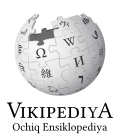 |
| Lithuanian Wikipedia | Lietuviškoji Vikipedija | Lithuanian | Latn | lt | 222,327 | 331 | 20 February 2003 |  |
| Slovene Wikipedia | Slovenska Wikipedija | Slovene | Latn | sl | 192,930 | 317 | 26 February 2002 |  |
| Esperanto Wikipedia | Vikipedio en Esperanto | Esperanto | Latn | eo | 370,573 | 310 | 6 November 2001 | 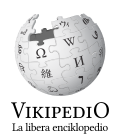 |
| Belarusian Wikipedia | Беларуская Вікіпедыя (Bielaruskaja Vikipiedyja) | Belarusian (official Narkamaŭka orthography) | Cyrl | be | 253,818 | 285 | 12 August 2004 (original) 27 March 2007 (clean version) |  |
| Georgian Wikipedia | ქართული ვიკიპედია (Kartuli vik’ip’edia) | Georgian | Geor | ka | 182,957 | 285 | November 2003 (unknown day) |  |
| Latvian Wikipedia | Vikipēdija latviešu valodā | Latvian | Latn | lv | 135,205 | 283 | 3 March 2003 |  |
| Galician Wikipedia | Galipedia or Wikipedia en galego | Galician | Latn | gl | 221,336 | 278 | 8 March 2003 |  |
| Kazakh Wikipedia | Қазақша Уикипедия (Qazaqşa Wïkïpedïya) (قازاقشا ۋىيكىيپەدىييا) | Kazakh | Cyrl | kk | 239,224 | 276 | 3 June 2002 |  |
| Tamil Wikipedia | தமிழ் விக்கிபீடியா (Tamiḻ vikkippīṭiyā) | Tamil | Taml | ta | 174,082 | 263 | September 2003 (unknown day) |  |
| Albanian Wikipedia | Wikipedia shqip | Albanian | Latn | sq | 102,536 | 256 | 12 October 2003 | 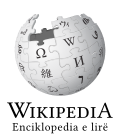 |
| Urdu Wikipedia | اردو ویکیپیڈیا (Urdū vikipīḍiyā) | Urdu | Arab | ur | 225,109 | 249 | 24 January 2004 |  |
| Macedonian Wikipedia | Македонска Википедија (Makedonska Vikipedija) | Macedonian | Cyrl | mk | 152,489 | 221 | September 2003 (unknown day) |  |
| Malayalam Wikipedia | മലയാളം വിക്കിപീഡിയ (Malayāḷaṃ vikkipīḍiya) | Malayalam | Mlym | ml | 86,781 | 212 | 21 December 2002 |  |
| Egyptian Arabic Wikipedia | ويكيپيديا مصرى (Wīkībīdiyā maṣri) | Egyptian Arabic | Arab | arz | 1,627,249 | 196 | 24 November 2008 | 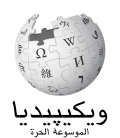 |
| Cebuano Wikipedia | Wikipedya sa Sinugboanon | Cebuano | Latn | ceb | 6,117,070 | 194 | 22 June 2005 |  |
| Afrikaans Wikipedia | Afrikaanse Wikipedia | Afrikaans | Latn | af | 124,144 | 185 | 16 November 2001 |  |
| Latin Wikipedia | Vicipaedia Latina | Latin | Latn | la | 140,204 | 178 | May 2002 (unknown day) | 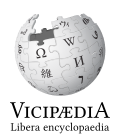 |
| Bosnian Wikipedia | Wikipedia na bosanskom jeziku | Bosnian | Latn | bs | 94,985 | 162 | 12 December 2002 | 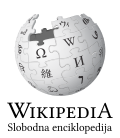 |
| Telugu Wikipedia | తెలుగు వికీపీడియా (Telugu vikīpīḍiyā) | Telugu | Telu | te | 112,882 | 162 | 10 December 2003 |  |
| Tagalog Wikipedia | Wikipediang Tagalog | Tagalog | Latn | tl | 48,543 | 160 | 1 December 2003 |  |
| Icelandic Wikipedia | Íslenska Wikipedia | Icelandic | Latn | is | 60,163 | 146 | 5 December 2003 |  |
| Norwegian Wikipedia (Nynorsk) | Norsk (Nynorsk) Wikipedia | Norwegian (Nynorsk) | Latn | nn | 174,717 | 146 | 31 July 2004 |  |
| Burmese Wikipedia | မြန်မာဝီကီပီးဒီးယား (Mranma wikipi:di:ya:) | Burmese | Mymr | my | 109,080 | 143 | July 2004 (unknown day) |  |
| Hausa Wikipedia | Wikipedia Hausa | Hausa | Latn | ha | 57,696 | 140 | Unknown date |  |
| Assamese Wikipedia | অসমীয়া ৱিকিপিডিয়া (Ôxômiya wikipidiya) | Assamese | Beng | as | 18,500 | 139 | 2 June 2002 |  |
| Mongolian Wikipedia | Монгол Википедиа (Mongol Vikipyedia) | Mongolian | Cyrl | mn | 25,557 | 138 | 28 February 2004 |  |
| Sorani Kurdish Wikipedia | ویکیپیدیای کوردیی سۆرانی (Wîkîpîdiyay Kurdî Soranî) | Kurdish (Sorani) | Arab | ckb | 76,769 | 135 | 13 August 2009 |  |
| Marathi Wikipedia | मराठी विकिपीडिया (Marāṭhī vikipīḍiyā) | Marathi | Deva | mr | 99,937 | 129 | 1 May 2003 | 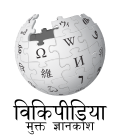 |
| Central Bikol Wikipedia | Wikipedyang Bikol Sentral | Central Bikol | Latn | bcl | 19,575 | 127 | 24 November 2007 |  |
| Igbo Wikipedia | Wikipedia Igbo | Igbo | Latn | ig | 42,695 | 120 | Unknown date |  |
| Punjabi Wikipedia | ਪੰਜਾਬੀ ਵਿਕੀਪੀਡੀਆ (Pañjābī vikīpīḍīā) | Punjabi | Guru | pa | 58,699 | 113 | 3 June 2002 |  |
| Asturian Wikipedia | Wikipedia n'asturianu | Asturian | Latn | ast | 137,286 | 111 | 20 July 2004 |  |
| Occitan Wikipedia | Wikipèdia en occitan | Occitan | Latn | oc | 90,871 | 111 | 20 October 2003 |  |
| Belarusian Wikipedia (Classical) | Беларуская Вікіпэдыя (Bielaruskaja Vikipiedyja) | Belarusian (Taraškievica orthography) | Cyrl | be-tarask | 88,949 | 108 | 27 March 2007 |  |
| Javanese Wikipedia | Wikipedia basa Jawa (ꦮꦶꦏꦶꦥꦺꦝꦶꦪꦃꦧꦱꦗꦮ) | Javanese | Latn/Java | jv | 74,503 | 108 | 8 March 2004 |  |
| Welsh Wikipedia | Wicipedia Cymraeg | Welsh | Latn | cy | 282,082 | 106 | July 2003 (unknown day) |  |
| South Azerbaijani Wikipedia | تورکجه ویکیپدیا (Azərbaycanca Vikipediya) | South Azerbaijani | Arab | azb | 244,074 | 105 | 22 July 2015 |  |
| Kannada Wikipedia | ಕನ್ನಡ ವಿಕಿಪೀಡಿಯ (Kannaḍa vikipīḍiya) | Kannada | Knda | kn | 33,790 | 103 | June 2003 (unknown day) |  |
| Kyrgyz Wikipedia | Кыргыз Википедиясы (Kyrgyz Wikipediyasy) | Kyrgyz | Cyrl | ky | 75,956 | 99 | 3 June 2002 |  |
| Tatar Wikipedia | Татар Википедиясе (Tatar Wikipediäse) | Tatar | Cyrl | tt | 502,680 | 97 | 15 September 2003 |  |
| Nepali Wikipedia | नेपाली विकिपिडिया (Nepālī vikipiḍiyā) | Nepali | Deva | ne | 29,901 | 93 | 3 June 2002 |  |
| Sinhala Wikipedia | සිංහල විකිපීඩියා (Siṁhala wikipīḍiyā) | Sinhala | Sinh | si | 22,916 | 91 | Unknown date |  |
| Breton Wikipedia | Wikipedia e brezhoneg | Breton | Latn | br | 88,467 | 91 | June 2004 (unknown day) | 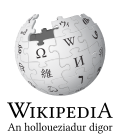 |
| Irish Wikipedia | Vicipéid na Gaeilge | Irish | Latn | ga | 61,765 | 91 | October 2003 (unknown day) |  |
| Alemannic Wikipedia | Alemannische Wikipedia | Alemannic German | Latn | als | 31,152 | 86 | 13 November 2003 |  |
| Tajik Wikipedia | Википедияи Тоҷикӣ (Vikipedijai Toçikī) | Tajik | Cyrl/Latn | tg | 115,300 | 85 | 27 January 2004 |  |
| Scots Wikipedia | Scots Wikipædia | Scots | Latn | sco | 34,376 | 85 | 23 June 2005 |  |
| Southern Min Wikipedia | Pe̍h-ōe-jī: Holopedia or Wikipedia Bân-lâm-gú | Southern Min | Latn | zh-min-nan | 433,684 | 85 | 28 May 2004 |  |
| Luxembourgish Wikipedia | Wikipedia op Lëtzebuergesch | Luxembourgish | Latn | lb | 65,096 | 80 | 21 July 2004 |  |
| Kurdish Wikipedia | Wîkîpediya kurdî (ویکیپەدیا کوردی) | Kurdish (Kurmanji) | Latn/Arab | ku | 90,346 | 80 | 4 January 2004 |  |
| Aragonese Wikipedia | Biquipedia en aragonés | Aragonese | Latn | an | 48,784 | 79 | 21 July 2004 |  |
| Yoruba Wikipedia | Wikipéédíà Yorùbá | Yoruba | Latn | yo | 35,201 | 76 | 2008 (unknown date) |  |
| Somali Wikipedia | Soomaali Wikipedia | Somali | Latn | so | 8,337 | 74 | Unknown date |  |
| West Frisian Wikipedia | Frysktalige Wikipedy | West Frisian | Latn | fy | 56,839 | 74 | 2 September 2002 | 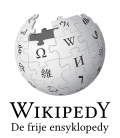 |
| Bashkir Wikipedia | Башҡорт Википедияһы (Başķort Vikipediya) | Bashkir | Cyrl | ba | 63,810 | 73 | 16 April 2005 |  |
| Waray Wikipedia | Waray Wikipedia | Waray | Latn | war | 1,273,940 | 73 | 25 September 2005 |  |
| Fiji Hindi Wikipedia | Fiji Baat Wikipedia | Fiji Hindi | Latn | hif | 11,601 | 67 | 12 November 2008 |  |
| Gujarati Wikipedia | ગુજરાતી વિકિપીડિયા (Gujrātī vikipīḍiyā) | Gujarati | Gujr | gu | 30,563 | 67 | July 2004 (unknown day) |  |
| Wu Wikipedia | Traditional Chinese: 吳語維基百科, simplified Chinese: 吴语维基百科 (Romanized: Wu-nyu Vi-ci-pah-khu) | Wu Chinese | Hans/Hant | wuu | 45,649 | 66 | 1 October 2006 |  |
| Balinese Wikipedia | Wikipédia Basa Bali (ᬯᬶᬓᬶᬧᬾᬤᬶᬬ ᬩᬲᬩᬮᬶ) | Balinese | Latn | ban | 29,516 | 66 | 14 October 2019 |  |
| Dusun Wikipedia | Wikipedia Kadazandusun | Dusun | Latn | dtp | 1,511 | 65 | 28 May 2024 |  |
| Khmer Wikipedia | វិគីភីឌាភាសាខ្មែរ (Vikiiphiidiaa phiăsaa khmae) | Khmer | Khmr | km | 11,425 | 63 | 15 January 2005 |  |
| Western Punjabi Wikipedia | پنجابی وکیپیڈیا (Pañjābī vikīpīḍīā) | Western Punjabi | Arab | pnb | 74,097 | 63 | 24 October 2008 |  |
| Ido Wikipedia | Wikipedio en Ido | Ido | Latn | io | 56,355 | 62 | 2004 (unknown date) |  |
| Lombard Wikipedia | Wikipedia in lombard | Lombard | Latn | lmo | 76,659 | 57 | October 2005 (unknown day) |  |
| Maltese Wikipedia | Wikipedija Malti | Maltese | Latn | mt | 7,351 | 57 | 10 September 2004 |  |
| Bavarian Wikipedia | Boarische Wikipedia | Bavarian | Latn | bar | 27,181 | 55 | 2 May 2006 |  |
| Pashto Wikipedia | پښتو ويکيپېډيا (Pax̌tó wīkīpeḍyā) | Pashto | Arab | ps | 20,508 | 54 | 2003 (unknown date) |  |
| Minangkabau Wikipedia | Wikipedia Minangkabau | Minangkabau | Latn | min | 228,382 | 53 | 7 February 2013 | 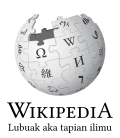 |
| Amharic Wikipedia | አማርኛ ዊኪፔዲያ (Amarəñña wikipediya) | Amharic | Ethi | am | 15,419 | 52 | December 2002 (unknown day) |  |
| Moroccan Arabic Wikipedia | ويكيبيديا المغربية (Wīkībīdiyā maḡribiyy) | Moroccan Arabic | Arab | ary | 10,591 | 52 | 20 July 2020 |  |
| Chuvash Wikipedia | Чăваш Википедийĕ (Russian-based: Căvaš Vikipedijĕ, Turkish-based: Çovaş Vikipyediyö) | Chuvash | Cyrl | cv | 57,654 | 52 | 22 November 2004 |  |
| Haitian Creole Wikipedia | Wikipedya kreyòl ayisyen | Haitian Creole | Latn | ht | 71,021 | 51 | August 2005 (unknown day) |  |
| Kinyarwanda Wikipedia | Wikipediya mu Ikinyarwanda | Kinyarwanda | Latn | rw | 8,045 | 51 | Unknown date |  |
| Low German Wikipedia | Plattdüütsche Wikipedia | Low German | Latn | nds | 85,447 | 51 | April 2006 (unknown day) |  |
| Old English Wikipedia | Engliscan Ƿikipǣdia | Old English | Latn | ang | 4,795 | 51 | Unknown date |  |
| Sundanese Wikipedia | Wikipédia basa Sunda | Sundanese | Latn | su | 62,010 | 51 | 15 March 2004 |  |
| Venetian Wikipedia | Wikipedia en łéngoa vèneta | Venetian | Latn | vec | 69,431 | 50 | Unknown date |  |
| Odia Wikipedia | ଓଡ଼ିଆ ଉଇକିପିଡ଼ିଆ (Oṛiā uikipiṛiā) | Odia | Orya | or | 19,560 | 50 | June 2002 (unknown day) |  |
| Zulu Wikipedia | Wikipedia isiZulu | Zulu | Latn | zu | 11,624 | 49 | 2003 (unknown date) |  |
| Betawi Wikipedia | Wikipédi basa Betawi | Betawi | Latn | bew | 2,967 | 48 | 24 April 2024 |  |
| Interlingua Wikipedia | Wikipedia in interlingua | Interlingua | Latn | ia | 29,934 | 48 | 29 April 2002 |  |
| Karakalpak Wikipedia | Qaraqalpaq Wikipediası | Karakalpak | Latn | kaa | 10,011 | 48 | 12 November 2008 |  |
| Moroccan Amazigh Wikipedia | ⵡⵉⴽⵉⴱⵉⴷⵢⴰ ⵜⴰⵎⴰⵣⵉⵖⵜ ⵜⴰⵏⴰⵡⴰⵢⵜ (Wikibidya tamaziɣt tanawayt) | Standard Moroccan Amazigh | Tfng | zgh | 11,728 | 48 | 6 November 2023 |  |
| Chechen Wikipedia | Нохчийн Википеди (Noxçiyn Wikipedi) | Chechen | Cyrl | ce | 601,525 | 47 | 28 February 2005 |  |
| Fula Wikipedia | Wikipedia Fulfude | Fula | Latn | ff | 8,597 | 47 | Unknown date |  |
| Malagasy Wikipedia | Wikipedia amin'ny teny malagasy | Malagasy | Latn | mg | 99,652 | 47 | April 2004 (unknown day) |  |
| Quechua Wikipedia | Qhichwa Wikipidiya | Quechua (Southern Quechua) | Latn | qu | 24,141 | 47 | January 2003 (unknown day) |  |
| Sanskrit Wikipedia | संस्कृतविकिपीडिया (Saṃskṛta vikipīḍiyā) | Sanskrit | Deva | sa | 12,284 | 47 | December 2003 (unknown day) |  |
| Faroese Wikipedia | Føroysk Wikipedia | Faroese | Latn | fo | 14,165 | 46 | 30 May 2004 |  |
| Silesian Wikipedia | Ślůnsko Wikipedyjo | Silesian | Latn | szl | 58,986 | 45 | 26 May 2008 |  |
| Classical Chinese Wikipedia | 文言維基大典 (Wéijī dàdiǎn wényán) | Classical Chinese | Hant | zh-classical | 13,599 | 44 | 31 July 2006 |  |
| Dagbani Wikipedia | Wikipidia Dagbani | Dagbani | Latn | dag | 12,794 | 44 | 30 June 2021 |  |
| Western Armenian Wikipedia | Արեւմտահայերէն Ուիքիփետիա (Arevmdahayerēn Uikʿipʿetia) | Western Armenian | Armn | hyw | 12,339 | 43 | 1 April 2019 |  |
| Yiddish Wikipedia | יידישע וויקיפעדיע (Yidishe vikipedye) | Yiddish | Hebr | yi | 15,517 | 43 | 4 March 2004 |  |
| Madurese Wikipedia | Wikipèḍia bhâsa Madhurâ | Madurese | Latn | mad | 1,763 | 41 | 15 December 2020 |  |
| Sardinian Wikipedia | Wikipedia in sardu | Sardinian | Latn | sc | 7,683 | 41 | April 2004 (unknown day) |  |
| Rusyn Wikipedia | Русиньска Вікіпедія (Rusîn'ska Vikipedija) | Rusyn | Cyrl | rue | 10,037 | 40 | 23 January 2011 |  |
| Maithili Wikipedia | मैथिली विकिपिडिया (Maithilī vikipiḍiyā) | Maithili | Deva | mai | 14,212 | 40 | 6 November 2014 |  |
| Acehnese Wikipedia | Wikipèdia bahsa Acèh | Acehnese | Latn | ace | 13,062 | 39 | 12 August 2009 |  |
| Banjarese Wikipedia | Wikipidia basa Banjar | Banjarese | Latn | bjn | 11,255 | 39 | 17 October 2010 |  |
| Limburgish Wikipedia | Limburgse Wikipedia | Limburgish | Latn | li | 15,100 | 39 | August 2004 (unknown day) |  |
| Tsonga Wikipedia | Wikipediya Xitsonga | Tsonga | Latn | ts | 944 | 39 | Unknown date |  |
| Zazaki Wikipedia | Wikipediyay Zazaki | Zaza | Latn | diq | 42,315 | 39 | 30 September 2006 | 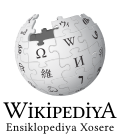 |
| Sindhi Wikipedia | سنڌي وڪيپيڊيا (Sindhi wikipidia) | Sindhi | Arab | sd | 19,113 | 39 | 6 February 2006 |  |
| Mingrelian Wikipedia | მარგალური ვიკიპედია (Margaluri vik’ip’edia) | Mingrelian | Geor | xmf | 21,800 | 38 | 12 June 2011 |  |
| Corsican Wikipedia | Corsipedia or Wikipedia in lingua corsa | Corsican | Latn | co | 8,479 | 37 | 9 December 2003 |  |
| Friulian Wikipedia | Vichipedie par furlan | Friulian | Latn | fur | 4,555 | 37 | 25 January 2005 |  |
| Yakut Wikipedia | Сахалыы Бикипиэдьийэ (Sahalyy Bikipieçje) | Yakut | Cyrl | sah | 17,565 | 37 | 26 May 2008 |  |
| Scottish Gaelic Wikipedia | Uicipeid na Gàidhlig | Scottish Gaelic | Latn | gd | 15,996 | 37 | September 2003 (unknown day) |  |
| Northern Sotho Wikipedia | Wikipedia Sesotho sa Leboa | Northern Sotho | Latn | nso | 8,766 | 36 | 29 October 2011 |  |
| Sicilian Wikipedia | Wikipedia ’n sicilianu | Sicilian | Latn | scn | 26,318 | 36 | 5 October 2004 |  |
| Võro Wikipedia | Võrokeeline Vikipeediä | Võro | Latn | fiu-vro | 6,800 | 36 | 2005 (unknown date) | 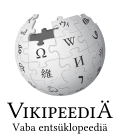 |
| Crimean Tatar Wikipedia | Qırımtatarca Vikipediya | Crimean Tatar | Latn | crh | 28,571 | 36 | 12 January 2008 |  |
| Ladin Wikipedia | Wikipedia per ladin | Ladin | Latn | lld | 180,788 | 36 | 17 August 2020 | 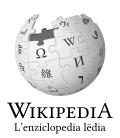 |
| Tibetan Wikipedia | བོད་ཡིག་གི་ཝེ་ཁེ་རིག་མཛོད (Wylie: Bod yig gi we khe rig mdzod) | Central Tibetan (Lhasa Tibetan) | Tibt | bo | 7,004 | 35 | Unknown date |  |
| Turkmen Wikipedia | Türkmençe Wikipediýa | Turkmen | Latn | tk | 6,943 | 35 | 16 February 2004 |  |
| Bhojpuri Wikipedia | बिहारी विकिपीडिया (Bihārī vikipīḍiyā) | Bihari (Bhojpuri) | Deva | bh | 8,816 | 35 | 21 February 2003 |  |
| Kapampangan Wikipedia | Wikipediang Kapampángan | Kapampangan | Latn | pam | 10,117 | 34 | 2005 (unknown date) |  |
| Lao Wikipedia | ວິກິພີເດຍ ພາສາລາວ (Wi ki phī dīa phasa lao) | Lao | Laoo | lo | 4,744 | 34 | Unknown date |  |
| Interlingue Wikipedia | Wikipedia in Interlingue | Interlingue | Latn | ie | 13,153 | 33 | Unknown date |  |
| Neapolitan Wikipedia | Wikipedia napulitana | Neapolitan | Latn | nap | 14,922 | 33 | 21 December 2006 |  |
| Pennsylvania Dutch Wikipedia | Pennsilfaanisch-Deitsche Wikipedelche | Pennsylvania Dutch | Latn | pdc | 2,043 | 33 | Unknown date |  |
| Venda Wikipedia | Wikipedia nga tshiVenḓa | Venda | Latn | ve | 819 | 33 | Unknown date |  |
| Angika Wikipedia | विकिपीडिया | Angika | Deva | anp | 1,643 | 32 | 22 March 2023 |  |
| Gorontalo Wikipedia | Wikipedia bahasa Hulontalo | Gorontalo | Latn | gor | 14,822 | 32 | 18 April 2018 |  |
| Walloon Wikipedia | Wikipedia e walon | Walloon | Latn | wa | 12,624 | 32 | 20 July 2003 |  |
| Wayuu Wikipedia | Wikipeetia süka wayuunaiki | Wayuu | Latn | guc | 672 | 32 | 27 February 2023 | 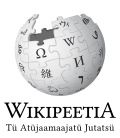 |
| Mazanderani Wikipedia | مازرونی ویکیپدیا (Mazandarani vikipedi) | Mazanderani | Arab | mzn | 58,185 | 31 | 30 September 2006 |  |
| Abkhaz Wikipedia | Аԥсуа авикипедиа (Apsua avikipedia) | Abkhaz | Cyrl | ab | 6,444 | 30 | Unknown date |  |
| Judaeo-Spanish Wikipedia | Vikipedya en lingua Judeo-Espanyola | Judaeo-Spanish | Latn | lad | 3,840 | 30 | Unknown date |  |
| Ligurian Wikipedia | Wikipedia Ligure | Ligurian | Latn | lij | 11,400 | 30 | Unknown date | 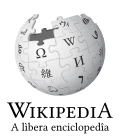 |
| Piedmontese Wikipedia | Wikipedia an piemontèisa | Piedmontese | Latn | pms | 70,344 | 30 | 27 March 2006 | 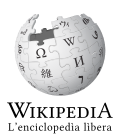 |
| Upper Sorbian Wikipedia | Hornjoserbska wikipedija | Upper Sorbian | Latn | hsb | 13,989 | 30 | 2 October 2006 |  |
| Kashmiri Wikipedia | کٲشُر وِکیٖپیٖڈیا (Kạ̄śur vikipīḍiyā) | Kashmiri | Arab | ks | 6,927 | 30 | 25 March 2004 |  |
| Volapük Wikipedia | Vükiped Volapükik | Volapük | Latn | vo | 42,055 | 30 | 27 January 2004 |  |
| Hakka Wikipedia | Pha̍k-fa-sṳ: Hakkâpedia or Hak-kâ-ngî Wikipedia | Hakka Chinese | Latn | hak | 10,350 | 29 | 27 May 2007 |  |
| Ilocano Wikipedia | Wikipedia nga Ilokano | Ilocano | Latn | ilo | 15,402 | 29 | 2005 (unknown date) |  |
| Picard Wikipedia | Wikipédia in lingue picarde | Picard | Latn | pcd | 5,949 | 29 | 19 March 2009 |  |
| Santali Wikipedia | ᱥᱟᱱᱛᱟᱲᱤ ᱣᱤᱠᱤᱯᱤᱰᱤᱭᱟ (Santaṛi wikipiḍiya) | Santali | Olck | sat | 13,322 | 29 | 2 August 2018 |  |
| Avar Wikipedia | Авар Википедия (Avar Vikipedija) | Avar | Cyrl | av | 3,628 | 28 | Unknown date |  |
| Aymara Wikipedia | Aymar Wikipidiya | Aymara | Latn | ay | 5,173 | 28 | Unknown date |  |
| Kabyle Wikipedia | Wikipedia taqbaylit | Kabyle | Latn | kab | 6,913 | 28 | 12 November 2007 |  |
| Swazi Wikipedia | Wikipedia siSwati | Swazi | Latn | ss | 1,052 | 28 | Unknown date |  |
| Xhosa Wikipedia | Wikipedia isiXhosa | Xhosa | Latn | xh | 2,245 | 28 | Unknown date |  |
| Tulu Wikipedia | ತುಳು ವಿಕಿಪೀಡಿಯ (Tuḷu vikipīḍiya) | Tulu | Knda | tcy | 2,829 | 28 | 6 August 2016 |  |
| Aromanian Wikipedia | Wikipedia pri Armâneaști | Aromanian | Latn | roa-rup | 1,390 | 27 | 2004 (unknown date) |  |
| Kashubian Wikipedia | Kaszëbskô Wikipedijô | Kashubian | Latn | csb | 5,478 | 27 | 31 March 2004 |  |
| Lower Sorbian Wikipedia | Dolnoserbska wikipedija | Lower Sorbian | Latn | dsb | 3,429 | 27 | 12 November 2008 |  |
| Manx Wikipedia | Wikipedia yn Gaelg | Manx | Latn | gv | 6,858 | 27 | September 2003 (unknown day) |  |
| Papiamento Wikipedia | Wikipedia na papiamentu | Papiamento | Latn | pap | 4,658 | 27 | Unknown date |  |
| West Flemish Wikipedia | West-Vlamse Wikipedia | West Flemish | Latn | vls | 8,112 | 27 | Unknown date |  |
| Cherokee Wikipedia | ᏫᎩᏇᏗᏯ ᏣᎳᎩ (Wigiquediya tsalagi) | Cherokee | Cher | chr | 1,026 | 26 | May 2004 (unknown day) |  |
| Luganda Wikipedia | Wikipediya Luganda | Luganda | Latn | lg | 3,413 | 26 | Unknown date |  |
| North Frisian Wikipedia | Nordfriisk Wikipedia | North Frisian | Latn | frr | 20,256 | 26 | 19 August 2010 |  |
| Tswana Wikipedia | Wikipedia Setswana | Tswana | Latn | tn | 2,141 | 26 | Unknown date |  |
| Guarani Wikipedia | Vikipetã avañe'ẽme | Guarani | Latn | gn | 5,908 | 26 | Unknown date |  |
| Wolof Wikipedia | Wikipedia Wolof | Wolof | Latn | wo | 1,724 | 26 | Unknown date |  |
| Chavacano Wikipedia | Chavacano Wikipedia | Zamboanga Chavacano | Latn | cbk-zam | 3,226 | 25 | 30 September 2006 |  |
| Eastern Min Wikipedia | Bàng-uâ-cê: Bànguâpedia or Mìng-dĕ̤ng-ngṳ̄ Wikipedia | Eastern Min | Latn | cdo | 16,657 | 25 | 30 September 2006 |  |
| Franco-Provençal Wikipedia | Vouiquipèdia en arpetan | Franco-Provençal | Latn | frp | 5,805 | 25 | 24 March 2006 |  |
| Ghanaian Pidgin Wikipedia | Ghanaian Pidgin Wikipedia | Ghanaian Pidgin English | Latn | gpe | 2,983 | 25 | 5 July 2023 |  |
| Greenlandic Wikipedia | Kalaallisut Wikipedia | Greenlandic | Latn | kl | 246 | 25 | Unknown date |  |
| Dzongkha Wikipedia | རྫོང་ཁ་ཝེ་ཁེ་རིག་མཛོད (Rdzong kha we khe rig mdzod) | Dzongkha | Tibt | dz | 387 | 24 | Unknown date |  |
| Emilian–Romagnol Wikipedia | Emiliàn e rumagnòl Vichipedèia | Emilian–Romagnol | Latn | eml | 13,203 | 24 | 30 September 2006 | 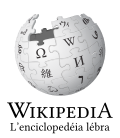 |
| Gagauz Wikipedia | Gagauzca Vikipediya | Gagauz | Latn | gag | 3,020 | 24 | 13 November 2010 |  |
| Gun Wikipedia | Gungbe Wikipedia | Gun | Latn | guw | 1,517 | 24 | 23 March 2022 |  |
| Igala Wikipedia | Wikipídiya Igala | Igala | Latn | igl | 857 | 24 | 24 April 2024 |  |
| Maldivian Wikipedia | ދިވެހި ވިކިޕީޑިޔާ (Dhivehi vikipīḍiyā) | Maldivian | Thaa | dv | 3,141 | 24 | 28 August 2004 |  |
| Māori Wikipedia | Wikipedia Māori | Māori | Latn | mi | 7,993 | 24 | 2003 (unknown date) | 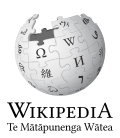 |
| Nigerian Pidgin Wikipedia | Naijá Wikipedia | Nigerian Pidgin | Latn | pcm | 1,473 | 24 | 17 August 2022 |  |
| Romansh Wikipedia | Vichipedia rumantscha | Romansh | Latn | rm | 3,784 | 24 | Unknown date |  |
| Sotho Wikipedia | Wikipedia Sesotho | Sotho | Latn | st | 1,407 | 24 | Unknown date |  |
| Sylheti Wikipedia | Sylheti | Sylo | syl | 1,158 | 24 | 25 February 2025 |  | |
| Ossetian Wikipedia | Ирон Википеди (Iron Vikipedi) | Ossetian | Cyrl | os | 20,415 | 24 | 28 February 2005 | 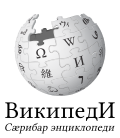 |
| Doteli Wikipedia | डोटेली विकिपिडिया (Ḍōṭēlī vikipiḍiyā) | Doteli | Deva | dty | 3,593 | 23 | 24 April 2017 |  |
| Gothic Wikipedia | 𐌲𐌿𐍄𐌹𐍃𐌺 𐍅𐌹𐌺𐌹𐍀𐌰𐌹𐌳𐌾𐌰 (Gutisk wikipaidja) | Gothic | Goth | got | 899 | 23 | Unknown date |  |
| Inuktitut Wikipedia | ᐃᓄᒃᑎᑐᑦ ᐊᕆᐅᙵᐃᐹ (Uikipitia inuktitut) | Inuktitut | Cans | iu | 418 | 23 | Unknown date |  |
| Lojban Wikipedia | ni'o la .uikipedi'as. pe lo jbobau | Lojban | Latn | jbo | 1,338 | 23 | Unknown date |  |
| Tuvan Wikipedia | Тыва Википедия (Tıwa Vikipediya) | Tuvan | Cyrl | tyv | 3,542 | 23 | 11 August 2013 |  |
| Dutch Low Saxon Wikipedia | Nedersaksische Wikipedie | Dutch Low Saxon | Latn | nds-nl | 8,009 | 23 | 24 March 2006 | 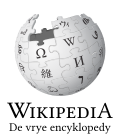 |
| Banyumasan Wikipedia | Wikipédia basa Banyumasan | Banyumasan | Latn | map-bms | 13,929 | 22 | 2005 (unknown date) |  |
| Cornish Wikipedia | Wikipedya Kernowek | Cornish | Latn | kw | 7,095 | 22 | Unknown date |  |
| Inari Sámi Wikipedia | Anarâškielâlâš Wikipedia | Inari Sámi | Latn | smn | 6,227 | 22 | 19 October 2020 |  |
| Old Church Slavonic Wikipedia | Словѣньска Википєдїꙗ (Slověnĭska Vikipedija) | Old Church Slavonic | Cyrs | cu | 1,301 | 22 | 30 September 2006 |  |
| Udmurt Wikipedia | Удмурт Википедия (Udmurt Vikipedija) | Udmurt | Cyrl | udm | 5,703 | 22 | 24 October 2005 |  |
| Extremaduran Wikipedia | Güiquipeya en estremeñu | Extremaduran | Latn | ext | 3,916 | 22 | 27 January 2007 |  |
| Samogitian Wikipedia | Žemaitėška Vikipedėjė | Samogitian | Latn | bat-smg | 17,267 | 22 | 25 March 2006 |  |
| Hawaiian Wikipedia | Hawai‘i Wikipikia | Hawaiian | Latn | haw | 2,899 | 21 | Unknown date |  |
| Kotava Wikipedia | Wikipedia men Kotava | Kotava | Latn | avk | 29,892 | 21 | 29 December 2020 | 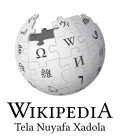 |
| Lingua Franca Nova Wikipedia | Vicipedia en lingua franca nova | Lingua Franca Nova | Latn | lfn | 4,462 | 21 | 18 April 2018 |  |
| Nahuatl Wikipedia | Huiquipedia nāhuatlahtōlcopa | Nahuatl | Latn | nah | 4,269 | 21 | August 2003 (unknown day) |  |
| Navajo Wikipedia | Wikiibíídiiya Dinék'ehjí | Navajo | Latn | nv | 22,661 | 21 | Unknown date | 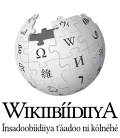 |
| Newar Wikipedia | विकिपिडियाय् लसकुस (Vikipiḍiyāya lasakūsa) | Newar | Deva | new | 72,508 | 21 | 4 June 2006 |  |
| Oromo Wikipedia | Oromoo Wikipedia | Oromo | Latn | om | 1,930 | 21 | Unknown date |  |
| Twi Wikipedia | Wikipidia Twi | Twi | Latn | tw | 4,200 | 21 | Unknown date | 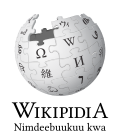 |
| Uyghur Wikipedia | UEY: ئۇيغۇرچە ۋىكىپېدىيە (ULY: Uyghur wikipëdiye) (UYY: Uyghur vikipediyə) (UKY: Уйғур википедийә) | Uyghur | Arab | ug | 9,557 | 21 | Unknown date |  |
| Zeelandic Wikipedia | Zeêuwstaelihe Wikipedia | Zeelandic | Latn | zea | 6,677 | 21 | 30 September 2006 |  |
| Erzya Wikipedia | Эрзянь Википедия (Erzäń Vikipedija) | Erzya | Cyrl | myv | 7,872 | 20 | 26 May 2008 |  |
| Kirundi Wikipedia | Wikipediya mu Ikirundi | Kirundi | Latn | rn | 703 | 20 | Unknown date |  |
| Meitei Wikipedia | ꯃꯤꯇꯩꯂꯣꯟ ꯋꯤꯀꯤꯄꯦꯗꯤꯌꯥ (Meeteilon weekeepaydeeya) | Meitei | Mtei | mni | 10,441 | 20 | 22 February 2021 |  |
| Saraiki Wikipedia | سرائیکی ویٖکیٖپیڈیا (Sarā'īkī vikipīḍiyā) | Saraiki | Arab | skr | 24,147 | 20 | 22 November 2020 |  |
| Saterland Frisian Wikipedia | Seelterfräiske Wikipedia | Saterland Frisian | Latn | stq | 4,128 | 20 | 12 November 2008 |  |
| Tumbuka Wikipedia | Wikipedia Chitumbuka | Tumbuka | Latn | tum | 18,725 | 20 | Unknown date |  |
| Ewe Wikipedia | Wikipiɖia Eʋegbe | Ewe | Latn | ee | 1,206 | 19 | Unknown date |  |
| Komi Wikipedia | Коми Википедия (Komi Vikipedija) | Komi | Cyrl | kv | 5,697 | 19 | August 2004 (unknown day) |  |
| Livvi-Karelian Wikipedia | Livvinkarjalan Wikipedii | Livvi-Karelian | Latn | olo | 4,559 | 19 | 7 October 2016 |  |
| Meadow Mari Wikipedia | Олык Марий Википедий (Olyk Marij Vikipedij) | Meadow Mari | Cyrl | mhr | 11,337 | 19 | 9 July 2009 |  |
| Moksha Wikipedia | Мокшень Википедиесь (Mokšenj Vikipedijesʹ) | Moksha | Cyrl | mdf | 7,385 | 19 | 26 May 2008 |  |
| N'Ko Wikipedia | ߥߞߌߔߘߋߞߎ ߒߞߏ (Wkipdeku n'ko) | N'Ko | Nkoo | nqo | 1,540 | 19 | 26 September 2019 |  |
| Shilha Wikipedia | Wikipidya taclḥiyt (ⵡⵉⴽⵉⵒⵉⴷⵢⴰ ⵜⴰⵛⵍⵃⵉⵜ) | Shilha | Latn/Tfng | shi | 10,863 | 19 | 30 June 2021 |  |
| Toba Batak Wikipedia | Wikipedia Batak Toba | Toba Batak | Latn | bbc | 1,054 | 19 | 6 November 2023 |  |
| Veps Wikipedia | Vepsän Vikipedii | Veps | Latn | vep | 7,001 | 19 | 1 February 2012 |  |
| Northern Sámi Wikipedia | Davvisámegiel Wikipedia | Northern Sámi | Latn | se | 7,901 | 19 | 20 July 2004 |  |
| Cree Wikipedia | ᐎᑭᐱᑎᔭ ᓀᐦᐃᔭᐍᐏᐣ (Wikipitiya nēhiyawēwin) | Cree | Cans | cr | 13 | 18 | August 2004 (unknown day) | 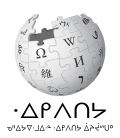 |
| Gan Wikipedia | Traditional Chinese: 贛語維基百科, simplified Chinese: 赣语维基百科 (Pha̍k-oa-chhi: Gon wéijī bǎikē) | Gan Chinese | Hans/Hant | gan | 6,759 | 18 | 27 May 2008 |  |
| Gilaki Wikipedia | گیلکی ویکیپدیاٰ (Gilɵki vikipɵdiya) | Gilaki | Arab | glk | 48,148 | 18 | 2006 (unknown date) |  |
| Kongo Wikipedia | Wikipedia kikôngo | Kongo | Latn | kg | 1,561 | 18 | Unknown date | 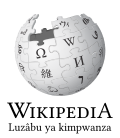 |
| Kusaal Wikipedia | Wikipiidia Kʋsaal | Kusaal | Latn | kus | 1,080 | 18 | 24 April 2024 |  |
| Lezgian Wikipedia | Лезги Википедия (Lezgi Vikipediä) | Lezgian | Cyrl | lez | 4,430 | 18 | 27 March 2012 |  |
| Mirandese Wikipedia | Biquipédia an lhéngua mirandesa | Mirandese | Latn | mwl | 4,280 | 18 | 12 August 2009 |  |
| Samoan Wikipedia | Wikipedia gagana Sāmoa | Samoan | Latn | sm | 1,174 | 18 | Unknown date |  |
| Shona Wikipedia | Wikipedhiya chiShona | Shona | Latn | sn | 11,467 | 18 | Unknown date |  |
| Tarantino Wikipedia | Uicchipèdie tarandíne | Tarantino | Latn | roa-tara | 9,493 | 18 | 30 September 2006 |  |
| Classical Syriac Wikipedia | ܘܝܩܝܦܕܝܐ ܠܫܢܐ ܣܘܪܝܝܐ (Wīqīpedyāʾ leššānā suryāyā) | Aramaic (Syriac) | Syrc | arc | 1,915 | 18 | July 2004 (unknown day) |  |
| Atikamekw Wikipedia | Atikamekw Wikipetcia | Atikamekw | Latn | atj | 2,069 | 17 | 21 June 2017 |  |
| Awadhi Wikipedia | अवधी विकिपीडिया (Avadhī vikipīḍiyā) | Awadhi | Deva | awa | 2,501 | 17 | 21 May 2020 |  |
| Bishnupriya Manipuri Wikipedia | বিষ্ণুপ্রিয়া মণিপুরী উইকিপিডিয়া (Bişnupriya mônipuri u'ikipiḍiẏā) | Bishnupriya Manipuri | Beng | bpy | 25,088 | 17 | 30 September 2006 |  |
| Buginese Wikipedia | ᨓᨗᨀᨗᨄᨙᨉᨗᨕ ᨅᨔ ᨕᨘᨁᨗ (Wikipedia basa Ugi) | Buginese | Bugi | bug | 15,951 | 17 | Unknown date |  |
| Buryat Wikipedia | Буряад Википеэди (Buryaad Vikipjeedi) | Buryat (Russia Buriat) | Cyrl | bxr | 2,861 | 17 | 30 September 2006 |  |
| Jamaican Patois Wikipedia | Jumiekan Patwa Wikipidia | Jamaican Patois | Latn | jam | 1,724 | 17 | 2 May 2016 |  |
| Palatine German Wikipedia | Pälzisch Wikipedia | Palatine German | Latn | pfl | 2,806 | 17 | 13 November 2010 |  |
| Pangasinan Wikipedia | Wikipedia Pangasinan | Pangasinan | Latn | pag | 2,615 | 17 | 30 September 2006 |  |
| Bislama Wikipedia | Wikipedia long Bislama | Bislama | Latn | bi | 1,469 | 16 | Unknown date |  |
| Chewa Wikipedia | Wikipedia Chichewa | Chewa | Latn | ny | 1,069 | 16 | Unknown date |  |
| Lingala Wikipedia | Lingála Wikipedia | Lingala | Latn | ln | 4,747 | 16 | Unknown date |  |
| Pa'O Wikipedia | ပအိုဝ်ႏဝီခီပီးဒီးယား (Pǎʼǒ wikhipi:di:ya) | Pa'O | Mymr | blk | 2,852 | 16 | 19 July 2022 |  |
| Romani Wikipedia | Romani Vikipidiya | Romani (Vlax Romani) | Latn | rmy | 759 | 16 | Unknown date |  |
| Sakizaya Wikipedia | Wikipitiya nu Sakizaya | Sakizaya | Latn | szy | 2,737 | 16 | 22 November 2019 |  |
| Central Kanuri Wikipedia | Central Kanuri | Latn | knc | 1,305 | 15 | 30 January 2025 |  | |
| Hill Mari Wikipedia | Кырык марла Википеди (Kyryk marla Vikipedi) | Hill Mari | Cyrl | mrj | 10,432 | 15 | 17 October 2010 |  |
| Iban Wikipedia | Iban Wikipedia | Iban | Latn | iba | 1,477 | 15 | 14 October 2024 |  |
| Kalmyk Wikipedia | Хальмг Бикипеди (Haľmg Vikipedi) | Kalmyk Oirat | Cyrl | xal | 1,665 | 15 | 24 March 2006 |  |
| Karachay-Balkar Wikipedia | Къарачай-Малкъар Википедия (Qaraçay-Malqar Wikipédiya) | Karachay-Balkar | Cyrl | krc | 2,460 | 15 | 19 March 2010 | 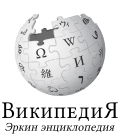 |
| Latgalian Wikipedia | Vikipedeja latgaļu volūdā | Latgalian | Latn | ltg | 1,092 | 15 | 18 March 2011 |  |
| Norman Wikipedia | Augeron, Cotentinais, Percheron: Viqùipédie normaunde Auregnais: Ouitchipédie Nourmaounde Brayon, Cauchois, Rouennais: Viqùipédie normande Guernésiais: Ouitchipédie normande Jèrriais: Ouitchipédie Nouormande Sercquiais: Witchipedi Normãdi | Norman | Latn | nrm | 5,036 | 15 | 2006 (unknown date) |  |
| Bambara Wikipedia | Wikipedi Bamanankan | Bambara | Latn | bm | 897 | 15 | Unknown date |  |
| Konkani Wikipedia | कोंकणी विकिपीडिया (Konknni Wikipidia) (ಕೊಂಕ್ಣಿ ವಿಕಿಪೀಡಿಯಾ) | Konkani (Goan Konkani) | Deva/Latn/Knda | gom | 3,614 | 15 | 16 June 2015 |  |
| Adyghe Wikipedia | Адыгэ Википедие (Adıgə Vikipedie) | Adyghe | Cyrl | ady | 562 | 14 | 11 February 2016 |  |
| Fante Wikipedia | Fante Wikipedia | Fante | Latn | fat | 884 | 14 | 20 April 2023 |  |
| Ingush Wikipedia | Гӏалгӏай Википеди (Ghalghaj Vikipedi) | Ingush | Cyrl | inh | 2,405 | 14 | 18 April 2018 |  |
| Mon Wikipedia | ဝဳကဳပဳဒဳယာမန် (Wīkīpīdīya mawn) | Mon | Mymr | mnw | 1,954 | 14 | 4 November 2019 |  |
| Novial Wikipedia | Wikipedie in novial | Novial | Latn | nov | 1,865 | 14 | 30 September 2006 |  |
| Pannonian Rusyn Wikipedia | Википедия на панонским руским язику (Vikipedija na panonskim ruskim yaziku) | Pannonian Rusyn | Cyrl | rsk | 708 | 14 | 14 October 2024 | |
| Seediq Wikipedia | Seediq Wikipidiya | Seediq | Latn | trv | 1,201 | 14 | 16 March 2021 |  |
| Shan Wikipedia | ဝီႇၶီႇၽီးတီးယႃးတႆး (Wiː-kʰiː-pʰiː-tiː-jaɑː- táy) | Shan | Mymr | shn | 13,828 | 14 | 14 November 2018 |  |
| Tok Pisin Wikipedia | Wikipedia long Tok Pisin | Tok Pisin | Latn | tpi | 1,387 | 14 | Unknown date |  |
| Zhuang Wikipedia | Veizgiek Bakgoh Vahcuengh | Zhuang (Standard Zhuang) | Latn | za | 3,003 | 14 | Unknown date |  |
| Amis Wikipedia | Wikipitiya 'Amis | Amis | Latn | ami | 1,146 | 13 | 28 October 2021 |  |
| Dagaare Wikipedia | Dagaare Wikipiideɛ | Dagaare | Latn | dga | 2,066 | 13 | 6 November 2023 |  |
| Komi-Permyak Wikipedia | Перем коми Википедия (Perem komi Vikipedija) | Komi-Permyak | Cyrl | koi | 3,469 | 13 | 19 October 2010 |  |
| Nias Wikipedia | Wikipedia Li Niha | Nias | Latn | nia | 1,756 | 13 | 11 January 2021 |  |
| Talysh Wikipedia | Tolyšə Vikipedijə | Talysh | Latn | tly | 9,140 | 13 | 30 August 2023 |  |
| Cheyenne Wikipedia | Vekepete'a Tsėhésenėstsestȯtse | Cheyenne | Latn | chy | 722 | 12 | Unknown date |  |
| Fijian Wikipedia | Vaka-Viti Wikipedia | Fijian | Latn | fj | 1,580 | 12 | Unknown date |  |
| Kabiye Wikipedia | Wikipediya kabɩyɛ | Kabiye | Latn | kbp | 1,714 | 12 | 23 June 2017 |  |
| Southern Ndebele Wikipedia | Wikiphidiya yelimi lesiNdebele | Southern Ndebele | Latn | nr | 177 | 12 | 14 October 2024 |  |
| Fon Wikipedia | Wikipedya ɖò Fɔngbemɛ | Fon | Latn | fon | 2,541 | 11 | 3 October 2023 |  |
| Kikuyu Wikipedia | Wikipedia Gĩgĩkũyũ | Kikuyu | Latn | ki | 1,874 | 11 | Unknown date |  |
| Lak Wikipedia | Лакку мазрал Википедия (Lak:u mazral Vikipediaˤ) | Lak | Cyrl | lbe | 1,264 | 11 | Unknown date |  |
| Mandailing Batak Wikipedia | Wikipedia Saro Mandailing | Mandailing Batak | Latn | btm | 1,164 | 11 | 21 June 2024 |  |
| Pontic Wikipedia | Ποντιακόν Βικιπαίδεια (Pontiakón Bikipaídeia) | Pontic Greek | Grek | pnt | 491 | 11 | 5 March 2009 |  |
| Tetum Wikipedia | Wikipédia iha lia-tetun | Tetum | Latn | tet | 1,372 | 11 | Unknown date |  |
| Tongan Wikipedia | Wikipedia ʻi lea fakatonga | Tongan | Latn | to | 2,023 | 11 | January 2004 (unknown day) | 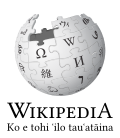 |
| Tyap Wikipedia | Wukipedia nTyap | Tyap | Latn | kcg | 1,346 | 11 | 16 May 2022 |  |
| Ripuarian Wikipedia | Wikkipedija en Ripoarisch Platt | Ripuarian | Latn | ksh | 3,001 | 11 | 6 July 2005 |  |
| Guianan Creole Wikipedia | Wikipédja an kriyòl gwiyannen | French Guianese Creole | Latn | gcr | 1,072 | 10 | 22 November 2019 |  |
| Sango Wikipedia | Wïkïpêdïyäa na Sängö | Sango | Latn | sg | 321 | 10 | Unknown date |  |
| Chamorro Wikipedia | Wikipedia Chamoru | Chamorro | Latn | ch | 557 | 9 | Unknown date |  |
| Dinka Wikipedia | Wikipedia Thuɔŋjäŋ | Dinka | Latn | din | 339 | 9 | 12 July 2017 |  |
| Gurene Wikipedia | Gurenɛ Wikipedia | Farefare (Gurene) | Latn | gur | 937 | 9 | 27 February 2023 |  |
| Iñupiaq Wikipedia | Uiqipitia Iñupiatun | Iñupiaq | Latn | ik | 599 | 9 | Unknown date |  |
| Kabardian Wikipedia | Адыгэбзэ Уикипедиэ (Adıgəbzə Wikipediă) | Kabardian | Cyrl | kbd | 1,649 | 9 | 18 March 2011 |  |
| Komering Wikipedia | Wikipidiya basa Kumoring | Komering | Latn | kge | 2,564 | 9 | 24 September 2024 |  |
| Mooré Wikipedia | Wikipidiya Mossi | Mooré | Latn | mos | 1,042 | 9 | 24 September 2024 |  |
| Pali Wikipedia | पालि विकिपीडिया (Pāli vikipīḍiyā) | Pali | Deva | pi | 2,559 | 9 | Unknown date |  |
| Sranan Tongo Wikipedia | Sranan Wikipedia | Sranan Tongo | Latn | srn | 1,131 | 9 | 12 November 2008 | 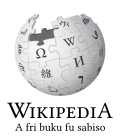 |
| Tahitian Wikipedia | Vitipetia Reo Tahiti | Tahitian | Latn | ty | 1,225 | 9 | Unknown date |  |
| Tigrinya Wikipedia | ዊኪፐድያ ብትግርኛ (Wikipädya bətəgrəñña) | Tigrinya | Ethi | ti | 337 | 9 | Unknown date |  |
| Atayal Wikipedia | Wikibitia na Tayal | Atayal | Latn | tay | 2,584 | 8 | 16 March 2021 |  |
| Norfuk Wikipedia | Norfuk Wikkapedya | Norfuk | Latn | pih | 0 | 7 | Unknown date |  |
| Obolo Wikipedia | Wìkìpedia Usem Obolo | Obolo | Latn | ann | 424 | 7 | 14 October 2024 |  |
| Paiwan Wikipedia | wikipidiya nua pinayuanan | Paiwan | Latn | pwn | 373 | 7 | 28 October 2021 |  |
| Southern Altai Wikipedia | Тӱштӱк алтай Википедия (Tüštük altay Vikipediya) | Southern Altai | Cyrl | alt | 1,102 | 7 | 22 February 2021 |  |
| Tai Nuea Wikipedia | ᥝᥤᥱ ᥑᥤᥱ ᥚᥤᥱ ᥖᥤᥱ ᥕᥣᥱ ᥖᥭᥰ ᥖᥬᥲ ᥑᥨᥒᥰ | Tai Nuea | Tale | tdd | 341 | 7 | 14 October 2024 |  |
| Tigre Wikipedia | ዊኪፒድያ ህግየ ትግሬ | Tigre | Ethi | tig | 39 | 6 | 12 December 2024 |  |
| Bajau Sama Wikipedia | Wikipidia Bajau Sama | West Coast Bajau | Latn | bdr | 233 | 5 | 6 August 2024 |  |
Inactive editions
[edit]The table below lists all the inactive language editions of Wikipedia.[15]
| Wikipedia name in English | Wikipedia name in native language | Language | Script (ISO 15924 code) | WP code | Launch date | Closure date | Logo |
|---|---|---|---|---|---|---|---|
| Afar Wikipedia (closed) | Afar | Latn | aa (closed) | Unknown date | 10 May 2008 |  | |
| Akan Wikipedia (closed) | Wikipidia Akan | Akan | Latn | ak (closed) | Unknown date | 1 April 2023 |  |
| Choctaw Wikipedia (closed) | Choctaw | Latn | cho (closed) | Unknown date | 3 July 2007 |  | |
| Herero Wikipedia (closed) | Herero | Latn | hz (closed) | Unknown date | 24 July 2007 |  | |
| Hiri Motu Wikipedia (closed) | Hiri Motu | Latn | ho (closed) | Unknown date | 9 July 2007 |  | |
| Kanuri Wikipedia (closed) | Kanuri | Latn | kr (closed) | Unknown date | 3 May 2007 |  | |
| Klingon Wikipedia (deleted) | Klingon | Latn | tlh (deleted) | June 2004 (unknown day) | Closure: Unknown date Deletion: August 2005 (unknown day) |  | |
| Kwanyama Wikipedia (closed) | Ovambo (Kwanyama) | Latn | kj (closed) | Unknown date | 10 July 2007 |  | |
| Marshallese Wikipedia (closed) | Marshallese | Latn | mh (closed) | Unknown date | 4 May 2008 |  | |
| Moldovan Wikipedia (deleted) | Romanian (Moldovan) | Cyrl | mo (deleted) | Unknown date | Closure: 21 November 2006 Deletion: 23 November 2017 |  | |
| Muscogee Wikipedia (closed) | Muscogee | Latn | mus (closed) | Unknown date | 10 July 2007 |  | |
| Nauruan Wikipedia (closed) | Wikipediya Naoero | Nauruan | Latn | na (closed) | Unknown date | 1 May 2023 |  |
| Ndonga Wikipedia (closed) | Ovambo (Ndonga) | Latn | ng (closed) | Unknown date | 10 January 2010 |  | |
| Northern Luri Wikipedia (locked) | Northern Luri | Arab | lrc (closed) | 16 June 2015 | 14 January 2021 |  | |
| Siberian Wikipedia (deleted) | fictitious "artificial Siberian language" | Cyrl | ru-sib (deleted) | 1 October 2006 | Closure: 19 September 2007 Deletion: 16 October 2007 |  | |
| Sichuan Yi Wikipedia (closed) | Nuosu | Yiii | ii (closed) | Unknown date | 29 July 2007 |  | |
| Toki Pona Wikipedia (deleted) | Toki Pona | Latn | tokipona (deleted) | 4 April 2004 | Closure: 2008 (unknown date) Deletion: 24 March 2009 |
Special editions
[edit]The table below lists all the special editions of Wikipedia.[15]
The Nostalgia Wikipedia is an archive of the English Wikipedia's initial display.
| Wikipedia name in English | Wikipedia name in native language | Language | Script (ISO 15924 code) | WP code | Launch date | Closure date (if applicable) | Logo |
|---|---|---|---|---|---|---|---|
| September 11 Wiki (deleted) | September 11 Wiki | English | Latn | sep11 (deleted) | 2001 (unknown date) | Made read-only: 2006 (unknown date) Closure: 2008 (unknown date) | |
| Test Wikipedia | Test Wikipedia | English | Latn | test | Unknown date |  | |
| Test2 Wikipedia | Test2 Wikipedia | English | Latn | test2 | Unknown date |  | |
| Wikipedia 10 (closed) | Wikipedia 10 | English | Latn | ten (closed) | Unknown date | Unknown date |  |
| Nostalgia Wikipedia | Nostalgia Wikipedia | English | Latn | nostalgia | Unknown date |  |
See also
[edit]- History of Wikipedia
- List of online encyclopedias
- Languages used on the Internet
- Wikimedia Foundation § Wikimedia projects
References
[edit]- ^ Wales, Jimmy (16 March 2001). "[Wikipedia-l] Alternative language wikipedias". Wikipedia-L (Mailing list). Archived from the original on 20 June 2014. Retrieved 21 December 2020.
- ^ Noisette, Thierry (24 September 2010). "Wikipédia en français dépasse le million d'articles" [French Wikipedia exceeds one million articles]. ZDNET France (in French). Red Ventures. Retrieved 21 December 2020.
Wikipédia, l'encyclopédie collaborative libre, fêtera ses dix ans en janvier 2011, et a débuté le 23 mars 2001 en version française, mais dès ce jeudi 23 septembre, à neuf ans et demi exactement, la Wikipédia francophone a enregistré officiellement le cap du million d'articles. (Wikipedia, the free collaborative encyclopedia, will celebrate its tenth anniversary in January 2011. It started on March 23, 2001 in its French version, but as of this Thursday, September 23, at exactly nine and a half years old, the French-language Wikipedia has officially reached the one million article mark.)
- ^ "History of HomePage". Swedish Wikipedia. Archived from the original on 8 June 2001. Retrieved 21 December 2020.
- ^ "Wikipedia statistics/meta.tab - Wikimedia Commons". Wikimedia Commons. Archived from the original on 10 September 2023. Retrieved 10 September 2023.
- ^ "Language proposal policy, revision 21811318". Meta-Wiki. Archived from the original on 22 December 2021. Retrieved 31 August 2021.
- ^ Anderson, Jennifer Joline (2011). Wikipedia: The Company and Its Founders (1 ed.). Abdo Group. p. 62. ISBN 978-1617148125.
- ^ "Wikipedia:Manual of Style". Archived from the original on 9 September 2023. Retrieved 9 September 2023.
- ^ Ferran-Ferrer, Núria; Castellanos-Pineda, Patricia; Minguillón, Julià; Meneses, Julio (2021). "The gender gap on the Spanish Wikipedia: Listening to the voices of women editors". Profesional de la información. 30 (5): 2. doi:10.3145/epi.2021.sep.16. S2CID 241442991.
- ^ Costa, Bernardo Esteves Gonçalves da (2014). As controvérsias da ciência na Wikipédia em português: o caso do aquecimento global (PDF) (Tese (doutorado)). Rio de Janeiro: Universidade Federal do Rio de Janeiro, Decania do Centro de Ciências Matemáticas e da Natureza, Programa de Pós-Graduação em História das Ciências e das Técnicas e Epistemologia. p. 72.
No passado, as tensões motivadas pelas variantes idiomáticas levaram a propostas para a criação de Wikipédias separadas para o português brasileiro e europeu. Tentativas nesse sentido lançadas em 2005, 2007 e 2009 foram rejeitadas pela Wikimedia Foundation, sob pretexto de que não se trata de idiomas suficientemente diferentes para justificar a cisão.
- ^ Rogers, Richard (2015). "Wikipedia as Cultural Reference". Digital Methods. MIT Press. pp. 166–177. ISBN 9780262528245. Retrieved 22 June 2021.
- ^ Tsoi, Grace (27 October 2013). "Wikipedia China Becomes Front Line for Views on Language and Culture". The New York Times.
- ^ "Wikipedias in multiple writing systems". Archived from the original on 10 September 2023. Retrieved 10 September 2023.
- ^ Likomitros, Nikos (14 March 2023). "Introducing Belarusian Wikipedia: An interview with Volha Sitnik". Diff. Retrieved 14 March 2023.
- ^ "Wikimedia language code". Archived from the original on 10 September 2023. Retrieved 10 September 2023.
- ^ a b c "List of Wikipedias". Meta-Wiki. Archived from the original on 20 December 2020. Retrieved 20 December 2020.
External links
[edit]- Wikipedia:List of Wikipedias
- Wikipedia portal
 Media related to Wikipedia at Wikimedia Commons
Media related to Wikipedia at Wikimedia Commons Wikipedia at Wikinews
Wikipedia at Wikinews Learning materials related to Wikipedia at Wikiversity
Learning materials related to Wikipedia at Wikiversity Works related to Wikipedia press releases at Wikisource
Works related to Wikipedia press releases at Wikisource
| International Phonetic Alphabet | |
|---|---|
 "IPA", transcribed narrowly as [aɪ̯ pʰiː eɪ̯] | |
| Script type | Alphabet
– partially featural |
Time period | 1888 to present |
| Languages | Used for phonetic and phonemic transcription of any oral language |
| Related scripts | |
Parent systems | |
| Unicode | |
| See Phonetic symbols in Unicode § Unicode blocks | |

The International Phonetic Alphabet (IPA) is an alphabetic system of phonetic notation based primarily on the Latin script. It was devised by the International Phonetic Association in the late 19th century as a standard written representation for the sounds of speech.[1] The IPA is used by linguists, lexicographers, foreign language students and teachers, speech–language pathologists, singers, actors, constructed language creators, and translators.[2][3]
The IPA is designed to represent those qualities of speech that are part of lexical (and, to a limited extent, prosodic) sounds in oral language: phones, intonation and the separation of syllables.[1] To represent additional qualities of speech – such as tooth gnashing, lisping, and sounds made with a cleft palate – an extended set of symbols may be used.[2]
Segments are transcribed by one or more IPA symbols of two basic types: letters and diacritics. For example, the sound of the English digraph ⟨ch⟩ may be transcribed in IPA with a single letter: [c], or with multiple letters plus diacritics: [t̠̺͡ʃʰ], depending on how precise one wishes to be. Slashes are used to signal phonemic transcription; therefore, /tʃ/ is more abstract than either [t̠̺͡ʃʰ] or [c] and might refer to either, depending on the context and language.[note 1]
Occasionally, letters or diacritics are added, removed, or modified by the International Phonetic Association. As of the most recent change in 2005,[4] there are 107 segmental letters, an indefinitely large number of suprasegmental letters, 44 diacritics (not counting composites), and four extra-lexical prosodic marks in the IPA. These are illustrated in the current IPA chart, posted below in this article and on the International Phonetic Association's website.[5]
History
[edit]In 1886, a group of French and English language teachers, led by the French linguist Paul Passy, formed what would be known from 1897 onwards as the International Phonetic Association (in French, l'Association phonétique internationale).[6] The idea of the alphabet had been suggested to Passy by Otto Jespersen. It was developed by Passy along with other members of the association, principally Daniel Jones. The original IPA alphabet was based on the Romic alphabet, an English spelling reform created by Henry Sweet that in turn was based on the Palaeotype alphabet of Alexander John Ellis, but to make it usable for other languages the values of the symbols were allowed to vary from language to language.[note 2] For example, the sound [ʃ] (the sh in shoe) was originally represented with the letter ⟨c⟩ for English but with ⟨x⟩ for French and German; with German, ⟨c⟩ was used for the [x] sound of Bach.[6] With a growing number of transcribed languages this proved impractical, and in 1888 the values of the letters were made uniform across languages. This would provide the base for all future revisions.[6][8]
Since its creation, the IPA has undergone a number of revisions. After relatively frequent revisions and expansions from the 1890s to the 1940s, the IPA remained nearly static until the Kiel Convention in 1989, which substantially revamped the alphabet. A smaller revision took place in 1993 with the resurrection of letters for mid central vowels[2] and the retirement of letters for voiceless implosives.[9] The alphabet was last revised in May 2005 with the addition of a letter for a labiodental flap.[10] Apart from the addition and removal of symbols, changes to the IPA have consisted largely of renaming symbols and categories and in modifying typefaces.[2]
Extensions to the International Phonetic Alphabet for speech pathology (extIPA) were created in 1990 and were officially adopted by the International Clinical Phonetics and Linguistics Association in 1994.[11] They were substantially revised in 2015.
Description
[edit]The general principle of the IPA is to provide one letter for each distinctive sound (speech segment).[note 3] This means that:
- It does not normally use combinations of letters to represent single sounds, the way English does with ⟨sh⟩, ⟨th⟩ and ⟨ng⟩, nor single letters to represent multiple sounds, the way ⟨x⟩ represents /ks/ or /ɡz/ in English.
- There are no letters that have context-dependent sound values, the way ⟨c⟩ and ⟨g⟩ in several European languages have a "hard" or "soft" pronunciation.
- The IPA does not usually have separate letters for two sounds if no known language makes a distinction between them, a property known as "selectiveness".[2][note 4] However, if a large number of phonemically distinct letters can be derived with a diacritic, that may be used instead.[note 5]
The alphabet is designed for transcribing sounds (phones), not phonemes, though it is used for phonemic transcription as well. A few letters that did not indicate specific sounds have been retired – ⟨ˇ⟩, once used for the "compound" tone of Swedish and Norwegian, and ⟨ƞ⟩, once used for the moraic nasal of Japanese – though one remains: ⟨ɧ⟩, used for the sj-sound of Swedish. When the IPA is used for broad phonetic or for phonemic transcription, the letter–sound correspondence can be rather loose. The IPA has recommended that more 'familiar' letters be used when that would not cause ambiguity.[13] For example, ⟨e⟩ and ⟨o⟩ for [ɛ] and [ɔ], ⟨t⟩ for [t̪] or [ʈ], ⟨f⟩ for [ɸ], etc. Indeed, in the illustration of Hindi in the IPA Handbook, the letters ⟨c⟩ and ⟨ɟ⟩ are used for /t͡ʃ/ and /d͡ʒ/.
Among the symbols of the IPA, 107 letters represent consonants and vowels, 31 diacritics are used to modify these, and 17 additional signs indicate suprasegmental qualities such as length, tone, stress, and intonation.[note 6] These are organized into a chart; the chart displayed here is the official chart as posted at the website of the IPA.
Letter forms
[edit]
The letters chosen for the IPA are meant to harmonize with the Latin alphabet.[note 7] For this reason, most letters are either Latin or Greek, or modifications thereof. Some letters are neither: for example, the letter denoting the glottal stop, ⟨ʔ⟩, originally had the form of a question mark with the dot removed. A few letters, such as that of the voiced pharyngeal fricative, ⟨ʕ⟩, were inspired by other writing systems (in this case, the Arabic letter ⟨ﻉ⟩, ʿayn, via the reversed apostrophe).[9]
Some letter forms derive from existing letters:
- The right-swinging tail, as in ⟨ʈ ɖ ɳ ɽ ʂ ʐ ɻ ɭ ⟩, indicates retroflex articulation. It originates from the hook of an r.
- The top hook, as in ⟨ɠ ɗ ɓ⟩, indicates implosion.
- Several nasal consonants are based on the form ⟨n⟩: ⟨n ɲ ɳ ŋ⟩. ⟨ɲ⟩ and ⟨ŋ⟩ derive from ligatures of gn and ng, and ⟨ɱ⟩ is an ad hoc imitation of ⟨ŋ⟩.
- Letters turned 180 degrees for suggestive shapes, such as ⟨ɐ ɔ ə ɟ ɥ ɯ ɹ ʌ ʍ ʎ⟩ from ⟨a c e f h m r v w y⟩.[note 8] Either the original letter may be reminiscent of the target sound, e.g., ⟨ɐ ə ɹ ʍ⟩ – or the turned one, e.g., ⟨ɔ ɟ ɥ ɯ ʌ ʎ⟩. Rotation was popular in the era of mechanical typesetting, as it had the advantage of not requiring the casting of special type for IPA symbols, much as the sorts had traditionally often pulled double duty for ⟨b⟩ and ⟨q⟩, ⟨d⟩ and ⟨p⟩, ⟨n⟩ and ⟨u⟩, ⟨6⟩ and ⟨9⟩ to reduce cost.
- Among consonant letters, the small capital letters ⟨ɢ ʜ ʟ ɴ ʀ ʁ⟩, and also ⟨ꞯ⟩ in extIPA, indicate more guttural sounds than their base letters – ⟨ʙ⟩ is a late exception. Among vowel letters, small capitals indicate lax vowels. Most of the original small-cap vowel letters have been modified into more distinctive shapes – e.g. ⟨ʊ ɤ ɛ ʌ⟩ from U Ɐ E A[citation needed] – with only ⟨ɪ ʏ⟩ remaining as small capitals.
Typography and iconicity
[edit]The International Phonetic Alphabet is based on the Latin script, and uses as few non-Latin letters as possible.[6] The Association created the IPA so that the sound values of most letters would correspond to "international usage" (approximately Classical Latin).[6] Hence, the consonant letters ⟨b⟩, ⟨d⟩, ⟨f⟩, ⟨ɡ⟩, ⟨h⟩, ⟨k⟩, ⟨l⟩, ⟨m⟩, ⟨n⟩, ⟨p⟩, ⟨s⟩, ⟨t⟩, ⟨v⟩, ⟨w⟩, and ⟨z⟩ have more or less their word-initial values in English (g as in gill, h as in hill, though p t k are unaspirated as in spill, still, skill); and the vowel letters ⟨a⟩, ⟨e⟩, ⟨i⟩, ⟨o⟩, ⟨u⟩ correspond to the (long) sound values of Latin: [i] is like the vowel in machine, [u] is as in rule, etc. Other Latin letters, particularly ⟨j⟩, ⟨r⟩ and ⟨y⟩, differ from English, but have their IPA values in Latin or other European languages.
This basic Latin inventory was extended by adding small-capital and cursive forms, diacritics and rotation. The sound values of these letters are related to those of the original letters, and their derivation may be iconic.[note 9] For example, letters with a rightward-facing hook at the bottom represent retroflex equivalents of the source letters, and small capital letters usually represent uvular equivalents of their source letters.
There are also several letters from the Greek alphabet, though their sound values may differ from Greek. For most Greek letters, subtly different glyph shapes have been devised for the IPA, specifically ⟨ɑ⟩, ⟨ꞵ⟩, ⟨ɣ⟩, ⟨ɛ⟩, ⟨ɸ⟩, ⟨ꭓ⟩ and ⟨ʋ⟩, which are encoded in Unicode separately from their parent Greek letters. One, however – ⟨θ⟩ – has only its Greek form, while for ⟨ꞵ ~ β⟩ and ⟨ꭓ ~ χ⟩, both Greek and Latin forms are in common use.[16] The tone letters are not derived from an alphabet, but from a pitch trace on a musical scale.
Beyond the letters themselves, there are a variety of secondary symbols which aid in transcription. Diacritic marks can be combined with the letters to add tone and phonetic detail such as secondary articulation. There are also special symbols for prosodic features such as stress and intonation.
Brackets and transcription delimiters
[edit]There are two principal types of brackets used to set off (delimit) IPA transcriptions:
| Symbol | Use |
|---|---|
| [ ... ] | Square brackets are used with phonetic notation, whether broad or narrow[17] – that is, for actual pronunciation, possibly including details of the pronunciation that may not be used for distinguishing words in the language being transcribed, but which the author nonetheless wishes to document. Such phonetic notation is the primary function of the IPA. |
| / ... / | Slashes[note 10] are used for abstract phonemic notation,[17] which note only features that are distinctive in the language, without any extraneous detail. For example, while the 'p' sounds of English pin and spin are pronounced differently (and this difference would be meaningful in some languages), the difference is not meaningful in English. Thus, phonemically the words are usually analyzed as /ˈpɪn/ and /ˈspɪn/, with the same phoneme /p/. To capture the difference between them – the allophones of /p/ – they can be transcribed phonetically as [pʰɪn] and [spɪn]. Phonemic notation commonly uses IPA symbols that are rather close to the default pronunciation of a phoneme, but for legibility often uses simple and 'familiar' letters rather than precise notation, for example /r/ and /o/ for the English [ɹʷ] and [əʊ̯] sounds, or /c, ɟ/ for [t͜ʃ, d͜ʒ] as mentioned above. |
Less common conventions include:
| Symbol | Use |
|---|---|
| { ... } | Braces ("curly brackets") are used for prosodic notation.[18] See Extensions to the International Phonetic Alphabet for examples in this system. |
| ( ... ) | Parentheses are used for indistinguishable[17] or unidentified utterances. They are also seen for silent articulation (mouthing),[19] where the expected phonetic transcription is derived from lip-reading, and with periods to indicate silent pauses, for example (…) or (2 sec). The latter usage is made official in the extIPA, with unidentified segments circled instead.[20] |
| ⸨ ... ⸩ | Double parentheses indicate either a transcription of obscured speech or a description of the obscuring noise. The IPA specifies that they mark the obscured sound,[18] as in ⸨2σ⸩, two audible syllables obscured by another sound. The current extIPA specifications prescribe double parentheses for the extraneous noise, such as ⸨cough⸩ for a cough by another person (not the speaker) or ⸨knock⸩ for a knock on a door, but the IPA Handbook identifies IPA and extIPA usage as equivalent.[21] Early publications of the extIPA explain double parentheses as marking "uncertainty because of noise which obscures the recording", and that within them "may be indicated as much detail as the transcriber can detect."[22] |
All three of the above are provided by the IPA Handbook. The following are not, but may be seen in IPA transcription or in associated material (especially angle brackets):
| Symbol | Field | Description |
|---|---|---|
| ⟦ ... ⟧ | Phonetics | Double square brackets are used for especially precise phonetic transcription, often finer than is normally practicable.[23] This is consistent with the IPA convention of doubling a symbol to indicate greater degree. Double brackets may indicate that a letter has its cardinal IPA value. For example, ⟦a⟧ is an open front vowel, rather than the perhaps slightly different value (such as open central) that "[a]" may be used to transcribe in a particular language. Thus, two vowels transcribed for easy legibility as [e] and [ɛ] may be clarified as actually being ⟦e̝⟧ and ⟦e⟧; [ð] may be more precisely ⟦ð̠̞ˠ⟧.[24] Double brackets may also be used for a specific token or speaker; for example, the pronunciation of a particular child as opposed to the adult pronunciation that is their target.[25] |
|
Morphophonology | Double slashes are used for morphophonemic transcription. This is also consistent with the IPA convention of doubling a symbol to indicate greater degree – in this case, more abstract than phonemic transcription.
Also commonly seen are the braces of set theory, especially when enclosing the set of phonemes that constitute the morphophoneme, e.g. {t d} or {t|d} or {/t/, /d/} for a conflated /t/ and /d/. Braces have a conflicting use to delimit prosodic transcription within the Voice Quality Symbols, which are an extension of IPA used in extIPA, but are not otherwise used in IPA proper. Other delimiters sometimes seen are pipes and double pipes taken from Americanist phonetic notation. However, these conflict with the pipes used in basic IPA prosodic transcription.[note 11] |
|
Diaphonology | Backslashes are used for diaphonemic transcription, for example setting off pronunciations in dictionaries that do not target a specific preferred dialect.[note 10]
Other delimiters are double slashes, – the same notation as for morphophonology, – exclamation marks, and pipes. |
|
Graphemics | Angle brackets[note 12] are used to mark both original Latin orthography and transliteration from another script; they are also used to identify individual graphemes of any script.[28][29] In IPA literature, they are used to indicate the IPA letters themselves rather than the sound values that they carry.
For example, ⟨cot⟩ would be used for the orthography of the English word cot, as opposed to its pronunciation /ˈkɒt/. Italics are usual when words are written as themselves (as with cot in the previous sentence) rather than to specifically note their orthography. However, italics are sometimes ambiguous, and italic markup is not always accessible to sight-impaired readers who rely on screen reader technology. Double angle brackets may occasionally be useful to distinguish original orthography from transliteration, or the idiosyncratic spelling of a manuscript from the normalized orthography of the language. Pipes are sometimes used instead of double angle brackets to denote the distinct allographs of a grapheme that are known as glyphs. For example, print |g| and script |ɡ| are two glyph variants of the grapheme ⟨g⟩ of Latin script.[30] |
Some examples of contrasting brackets in the literature:
In some English accents, the phoneme /l/, which is usually spelled as ⟨l⟩ or ⟨ll⟩, is articulated as two distinct allophones: the clear [l] occurs before vowels and the consonant /j/, whereas the dark [ɫ]/[lˠ] occurs before consonants, except /j/, and at the end of words.[31]
the alternations /f/ – /v/ in plural formation in one class of nouns, as in knife /naɪf/ – knives /naɪvz/, which can be represented morphophonemically as {naɪV} – {naɪV+z}. The morphophoneme {V} stands for the phoneme set {/f/, /v/}.[32]
[ˈf\faɪnəlz ˈhɛld ɪn (.) ⸨knock on door⸩ bɑɹsə{𝑝ˈloʊnə and ˈmədɹɪd 𝑝}] — f-finals held in Barcelona and Madrid.[33]
Other representations
[edit]IPA letters have cursive forms designed for use in manuscripts and when taking field notes, but the Handbook recommended against their use, as cursive IPA is "harder for most people to decipher".[34] A braille representation of the IPA for blind or visually impaired professionals and students has also been developed.[35]
Modifying the IPA chart
[edit]
The International Phonetic Alphabet is occasionally modified by the Association. After each modification, the Association provides an updated simplified presentation of the alphabet in the form of a chart. (See History of the IPA.) Not all aspects of the alphabet can be accommodated in a chart of the size published by the IPA. The alveolo-palatal and epiglottal consonants, for example, are not included in the consonant chart for reasons of space rather than of theory (two additional columns would be required, one between the retroflex and palatal columns and the other between the pharyngeal and glottal columns), and the lateral flap would require an additional row for that single consonant, so they are listed instead under the catchall block of "other symbols".[36] The indefinitely large number of tone letters would make a full accounting impractical even on a larger page, and only a few examples are shown, and even the tone diacritics are not complete; the reversed tone letters are not illustrated at all.
The procedure for modifying the alphabet or the chart is to propose the change in the Journal of the IPA. (See, for example, December 2008 on an open central unrounded vowel[37] and August 2011 on central approximants.)[38] Reactions to the proposal may be published in the same or subsequent issues of the Journal (as in August 2009 on the open central vowel).[39][better source needed] A formal proposal is then put to the Council of the IPA[40][clarification needed] – which is elected by the membership[41] – for further discussion and a formal vote.[42][43]
Many users of the alphabet, including the leadership of the Association itself, deviate from its standardized usage.[note 13] The Journal of the IPA finds it acceptable to mix IPA and extIPA symbols in consonant charts in their articles. (For instance, including the extIPA letter ⟨𝼆⟩, rather than ⟨ʎ̝̊⟩, in an illustration of the IPA.)[44]
Usage
[edit]Of more than 160 IPA symbols, relatively few will be used to transcribe speech in any one language, with various levels of precision. A precise phonetic transcription, in which sounds are specified in detail, is known as a narrow transcription. A coarser transcription with less detail is called a broad transcription. Both are relative terms, and both are generally enclosed in square brackets.[1] Broad phonetic transcriptions may restrict themselves to easily heard details, or only to details that are relevant to the discussion at hand, and may differ little if at all from phonemic transcriptions, but they make no theoretical claim that all the distinctions transcribed are necessarily meaningful in the language.

For example, the English word little may be transcribed broadly as [ˈlɪtəl], approximately describing many pronunciations. A narrower transcription may focus on individual or dialectical details: [ˈɫɪɾɫ] in General American, [ˈlɪʔo] in Cockney, or [ˈɫɪːɫ] in Southern US English.
Phonemic transcriptions, which express the conceptual counterparts of spoken sounds, are usually enclosed in slashes (/ /) and tend to use simpler letters with few diacritics. The choice of IPA letters may reflect theoretical claims of how speakers conceptualize sounds as phonemes or they may be merely a convenience for typesetting. Phonemic approximations between slashes do not have absolute sound values. For instance, in English, either the vowel of pick or the vowel of peak may be transcribed as /i/, so that pick, peak would be transcribed as /ˈpik, ˈpiːk/ or as /ˈpɪk, ˈpik/; and neither is identical to the vowel of the French pique, which would also be transcribed /pik/. By contrast, a narrow phonetic transcription of pick, peak, pique could be: [pʰɪk], [pʰiːk], [pikʲ].
Linguists
[edit]IPA is popular for transcription by linguists. Some American linguists, however, use a mix of IPA with Americanist phonetic notation or Sinological phonetic notation or otherwise use nonstandard symbols for various reasons.[45] Authors who employ such nonstandard use are encouraged to include a chart or other explanation of their choices, which is good practice in general, as linguists differ in their understanding of the exact meaning of IPA symbols and common conventions change over time.
Dictionaries
[edit]English
[edit]Many British dictionaries, including the Oxford English Dictionary and some learner's dictionaries such as the Oxford Advanced Learner's Dictionary and the Cambridge Advanced Learner's Dictionary, now use the International Phonetic Alphabet to represent the pronunciation of words.[46] However, most American (and some British) volumes use one of a variety of pronunciation respelling systems, intended to be more comfortable for readers of English and to be more acceptable across dialects, without the implication of a preferred pronunciation that the IPA might convey. For example, the respelling systems in many American dictionaries (such as Merriam-Webster) use ⟨y⟩ for IPA [ j] and ⟨sh⟩ for IPA [ ʃ ], reflecting the usual spelling of those sounds in English.[47][48][note 14] (In IPA, [y] represents the sound of the French ⟨u⟩, as in tu, and [sh] represents the sequence of consonants in grasshopper.)
Other languages
[edit]The IPA is also not universal among dictionaries in languages other than English. Monolingual dictionaries of languages with phonemic orthographies generally do not bother with indicating the pronunciation of most words, and tend to use respelling systems for words with unexpected pronunciations. Dictionaries produced in Israel use the IPA rarely and sometimes use the Hebrew alphabet for transcription of foreign words.[note 15] Bilingual dictionaries that translate from foreign languages into Russian usually employ the IPA, but monolingual Russian dictionaries occasionally use pronunciation respelling for foreign words.[note 16] The IPA is more common in bilingual dictionaries, but there are exceptions here too. Mass-market bilingual Czech dictionaries, for instance, tend to use the IPA only for sounds not found in Czech.[note 17]
Standard orthographies and case variants
[edit]IPA letters have been incorporated into the alphabets of various languages, notably via the Africa Alphabet in many sub-Saharan languages such as Hausa, Fula, Akan, Gbe languages, Manding languages, Lingala, etc. Capital case variants have been created for use in these languages. For example, Kabiyè of northern Togo has Ɖ ɖ, Ŋ ŋ, Ɣ ɣ, Ɔ ɔ, Ɛ ɛ, Ʋ ʋ. These, and others, are supported by Unicode, but appear in Latin ranges other than the IPA extensions.
In the IPA itself, however, only lower-case letters are used. The 1949 edition of the IPA handbook indicated that an asterisk ⟨*⟩ might be prefixed to indicate that a word was a proper name,[50] but this convention was not included in the 1999 Handbook, which notes the contrary use of the asterisk as a placeholder for a sound or feature that does not have a symbol.[51]
Classical singing
[edit]The IPA has widespread use among classical singers during preparation as they are frequently required to sing in a variety of foreign languages. They are also taught by vocal coaches to perfect diction and improve tone quality and tuning.[52] Opera librettos are authoritatively transcribed in IPA, such as Nico Castel's volumes[53] and Timothy Cheek's book Singing in Czech.[54] Opera singers' ability to read IPA was used by the site Visual Thesaurus, which employed several opera singers "to make recordings for the 150,000 words and phrases in VT's lexical database ... for their vocal stamina, attention to the details of enunciation, and most of all, knowledge of IPA".[55]
Letters
[edit]The International Phonetic Association organizes the letters of the IPA into three categories: pulmonic consonants, non-pulmonic consonants, and vowels.[note 18][57][58]
Pulmonic consonant letters are arranged singly or in pairs of voiceless (tenuis) and voiced sounds, with these then grouped in columns from front (labial) sounds on the left to back (glottal) sounds on the right. In official publications by the IPA, two columns are omitted to save space, with the letters listed among "other symbols" even though theoretically they belong in the main chart.[note 19] They are arranged in rows from full closure (occlusives: stops and nasals) at top, to brief closure (vibrants: trills and taps), to partial closure (fricatives), and finally minimal closure (approximants) at bottom, again with a row left out to save space. In the table below, a slightly different arrangement is made: All pulmonic consonants are included in the pulmonic-consonant table, and the vibrants and laterals are separated out so that the rows reflect the common lenition pathway of stop → fricative → approximant, as well as the fact that several letters pull double duty as both fricative and approximant; affricates may then be created by joining stops and fricatives from adjacent cells. Shaded cells represent articulations that are judged to be impossible or not distinctive.
Vowel letters are also grouped in pairs – of unrounded and rounded vowel sounds – with these pairs also arranged from front on the left to back on the right, and from maximal closure at top to minimal closure at bottom. No vowel letters are omitted from the chart, though in the past some of the mid central vowels were listed among the "other symbols".
Consonants
[edit]Pulmonic consonants
[edit]A pulmonic consonant is a consonant made by obstructing the glottis (the space between the vocal folds) or oral cavity (the mouth) and either simultaneously or subsequently letting out air from the lungs. Pulmonic consonants make up the majority of consonants in the IPA, as well as in human language. All consonants in English fall into this category.[60]
The pulmonic consonant table, which includes most consonants, is arranged in rows that designate manner of articulation, meaning how the consonant is produced, and columns that designate place of articulation, meaning where in the vocal tract the consonant is produced. The main chart includes only consonants with a single place of articulation.
| ||||||||||||||||||||||||||||||||||||||||||||||||||||||||||||||||||||||||||||||||||||||||||||||||||||||||||||||||||||||||||||||||||||||||||||||||||||||||||||||||||||||||||||||||||||||||||||||||||||||||||||||||||||||||||||||||||||||||||||||||||||||||||||||||||||||||||||||||||||||||||||||||||||||||||||||
Notes
- In rows where some letters appear in pairs (the obstruents), the letter to the right represents a voiced consonant, except breathy-voiced [ɦ].[61] In the other rows (the sonorants), the single letter represents a voiced consonant.
- While IPA provides a single letter for the coronal places of articulation (for all consonants but fricatives), these do not always have to be used exactly. When dealing with a particular language, the letters may be treated as specifically dental, alveolar, or post-alveolar, as appropriate for that language, without diacritics.
- Shaded areas indicate articulations judged to be impossible.
- The letters [β, ð, ʁ, ʕ, ʢ] are canonically voiced fricatives but may be used for approximants.[note 20]
- In many languages, such as English, [h] and [ɦ] are not actually glottal, fricatives, or approximants. Rather, they are bare phonation.[63]
- It is primarily the shape of the tongue rather than its position that distinguishes the fricatives [ʃ ʒ], [ɕ ʑ], and [ʂ ʐ].
- [ʜ, ʢ] are defined as epiglottal fricatives under the "Other symbols" section in the official IPA chart, but they may be treated as trills at the same place of articulation as [ħ, ʕ] because trilling of the aryepiglottic folds typically co-occurs.[64]
- Some listed phones are not known to exist as phonemes in any language.
Non-pulmonic consonants
[edit]Non-pulmonic consonants are sounds whose airflow is not dependent on the lungs. These include clicks (found in the Khoisan languages and some neighboring Bantu languages of Africa), implosives (found in languages such as Sindhi, Hausa, Swahili and Vietnamese), and ejectives (found in many Amerindian and Caucasian languages).
| ||||||||||||||||||||||||||||||||||||||||||||||||||||||||||||||||||||||||||||||||||||||||||||||||||||||||||||||||||||||||||||||||||||||||
Notes
- Clicks have traditionally been described as consisting of a forward place of articulation, commonly called the click "type" or historically the "influx", and a rear place of articulation, which when combined with the quality of the click is commonly called the click "accompaniment" or historically the "efflux". The IPA click letters indicate only the click type (forward articulation and release). Therefore, all clicks require two letters for proper notation: ⟨k͡ǀ, ɡ͡ǀ, q͡ǀ⟩, etc., or with the order reversed if both the forward and rear releases are audible. The letter for the rear articulation is frequently omitted, in which case a ⟨k⟩ may usually be assumed. However, some researchers dispute the idea that clicks should be analyzed as doubly articulated, as the traditional transcription implies, and analyze the rear occlusion as solely a part of the airstream mechanism.[65] In transcriptions of such approaches, the click letter represents both places of articulation, with the different letters representing the different click types, and diacritics are used for the elements of the accompaniment: ⟨ǀ, ǀ̬, ǀ̃⟩, etc.
- Letters for the voiceless implosives ⟨ƥ, ƭ, ƈ, ƙ, ʠ⟩ are no longer supported by the IPA, though they remain in Unicode. Instead, the IPA typically uses the voiced equivalent with a voiceless diacritic: ⟨ɓ̥, ɗ̥⟩, etc.
- The letter for the retroflex implosive, ⟨ᶑ⟩, is not "explicitly IPA approved",[66] but has the expected form if such a symbol were to be approved.
- The ejective diacritic is placed at the right-hand margin of the consonant, rather than immediately after the letter for the stop: ⟨t͜ʃʼ⟩, ⟨kʷʼ⟩. In imprecise transcription, it often stands in for a superscript glottal stop in glottalized but pulmonic sonorants, such as [mˀ], [lˀ], [wˀ], [aˀ] – also transcribable as creaky [m̰], [l̰], [w̰], [a̰].
Affricates
[edit]Affricates and co-articulated stops are represented by two letters joined by a tie bar, either above or below the letters with no difference in meaning.[note 21] Affricates are optionally represented by ligatures – e.g. ⟨ʧ, ʤ ⟩ – though this is no longer official IPA usage[1] because a great number of ligatures would be required to represent all affricates this way. Alternatively, a superscript notation for a consonant release is sometimes used to transcribe affricates, for example ⟨tˢ⟩ for [t͜s], paralleling [kˣ] ~ [k͜x]. The letters for the palatal plosives ⟨c⟩ and ⟨ɟ⟩ are often used as a convenience for [t͜ʃ] and [d͜ʒ] or similar affricates, even in official IPA publications, so they must be interpreted with care.
| |||||||||||||||||||||||||||||||||||||||||||||||||||||||||||||||||||||||||||||||||||||||||||||||||||||||||||||||||||||||||||||||||||||||||||||
Co-articulated consonants
[edit]Co-articulated consonants are sounds that involve two simultaneous places of articulation (are pronounced using two parts of the vocal tract). In English, the [w] in "went" is a coarticulated consonant, being pronounced by rounding the lips and raising the back of the tongue. Similar sounds are [ʍ] and [ɥ]. In some languages, plosives can be double-articulated, for example in the name of Laurent Gbagbo.
|
|
Notes
- [ɧ], the Swedish sj-sound, is described by the IPA as a "simultaneous [ʃ] and [x]", but it is unlikely such a simultaneous fricative actually exists in any language.[68]
- Multiple tie bars can be used: ⟨a͡b͡c⟩ or ⟨a͜b͜c⟩. For instance, a pre-voiced velar affricate may be transcribed as ⟨g͡k͡x⟩
- If a diacritic needs to be placed on or under a tie bar, the combining grapheme joiner (U+034F) needs to be used, as in [b͜͏̰də̀bdʊ̀] 'chewed' (Margi). Font support is spotty, however.
Vowels
[edit]

The IPA defines a vowel as a sound which occurs at a syllable center.[69] Below is a chart depicting the vowels of the IPA. The IPA maps the vowels according to the position of the tongue.
| ||||||||||||||||||||||||||||||||
The vertical axis of the chart is mapped by vowel height. Vowels pronounced with the tongue lowered are at the bottom, and vowels pronounced with the tongue raised are at the top. For example, [ɑ] (the first vowel in father) is at the bottom because the tongue is lowered in this position. [i] (the vowel in "meet") is at the top because the sound is said with the tongue raised to the roof of the mouth.
In a similar fashion, the horizontal axis of the chart is determined by vowel backness. Vowels with the tongue moved towards the front of the mouth (such as [ɛ], the vowel in "met") are to the left in the chart, while those in which it is moved to the back (such as [ʌ], the vowel in "but") are placed to the right in the chart.
In places where vowels are paired, the right represents a rounded vowel (in which the lips are rounded) while the left is its unrounded counterpart.
Diphthongs
[edit]Diphthongs are typically specified with a non-syllabic diacritic, as in ⟨ui̯⟩ or ⟨u̯i⟩, or with a superscript for the on- or off-glide, as in ⟨uⁱ⟩ or ⟨ᵘi⟩. Sometimes a tie bar is used: ⟨u͜i⟩, especially when it is difficult to tell if the diphthong is characterized by an on-glide or an off-glide or when it is variable.
Notes
- ⟨a⟩ officially represents a front vowel, but there is little if any distinction between front and central open vowels (see Vowel § Acoustics), and ⟨a⟩ is frequently used for an open central vowel.[45] If disambiguation is required, the retraction diacritic or the centralized diacritic may be added to indicate an open central vowel, as in ⟨a̠⟩ or ⟨ä⟩.
Diacritics and prosodic notation
[edit]Diacritics are used for phonetic detail. They are added to IPA letters to indicate a modification or specification of that letter's normal pronunciation.[70]
By being made superscript, any IPA letter may function as a diacritic, conferring elements of its articulation to the base letter. Those superscript letters listed below are specifically provided for by the IPA Handbook; other uses can be illustrated with ⟨tˢ⟩ ([t] with fricative release), ⟨ᵗs⟩ ([s] with affricate onset), ⟨ⁿd⟩ (prenasalized [d]), ⟨bʱ⟩ ([b] with breathy voice), ⟨mˀ⟩ (glottalized [m]), ⟨sᶴ⟩ ([s] with a flavor of [ʃ], i.e. a voiceless alveolar retracted sibilant), ⟨oᶷ⟩ ([o] with diphthongization), ⟨ɯᵝ⟩ (compressed [ɯ]). Superscript diacritics placed after a letter are ambiguous between simultaneous modification of the sound and phonetic detail at the end of the sound. For example, labialized ⟨kʷ⟩ may mean either simultaneous [k] and [w] or else [k] with a labialized release. Superscript diacritics placed before a letter, on the other hand, normally indicate a modification of the onset of the sound (⟨mˀ⟩ glottalized [m], ⟨ˀm⟩ [m] with a glottal onset). (See § Superscript IPA.)
| Airstream diacritics | |||||
|---|---|---|---|---|---|
| ◌ʼ | kʼ sʼ | Ejective | |||
| Syllabicity diacritics | |||||
| ◌̩ | ɹ̩ n̩ | Syllabic | ◌̯ | ɪ̯ ʊ̯ | Non-syllabic |
| ◌̍ | ɻ̍ ŋ̍ | ◌̑ | y̑ | ||
| Consonant-release diacritics | |||||
| ◌ʰ | tʰ | Aspirated[α] | ◌̚ | p̚ | No audible release |
| ◌ⁿ | dⁿ | Nasal release | ◌ˡ | dˡ | Lateral release |
| ◌ᶿ | tᶿ | Voiceless dental fricative release | ◌ˣ | tˣ | Voiceless velar fricative release |
| ◌ᵊ | dᵊ | Mid central vowel release | |||
| Phonation diacritics | |||||
| ◌̥ | n̥ d̥ | Voiceless | ◌̬ | s̬ t̬ | Voiced |
| ◌̊ | ɻ̊ ŋ̊ | ||||
| ◌̤ | b̤ a̤ | Breathy voiced[α] | ◌̰ | b̰ a̰ | Creaky voiced |
| Articulation diacritics | |||||
| ◌̪ | t̪ d̪ | Dental (◌͆ is dentolabial or underbite in extIPA) |
◌̼ | t̼ d̼ | Linguolabial |
| ◌͆ | ɮ͆ | ||||
| ◌̺ | t̺ d̺ | Apical | ◌̻ | t̻ d̻ | Laminal |
| ◌̟ | u̟ t̟ | Advanced (fronted) | ◌̠ | i̠ t̠ | Retracted (backed) |
| ◌᫈ | ɡ᫈ | ◌ | q[β] | ||
| ◌̈ | ë ä | Centralized | ◌̽ | e̽ ɯ̽ | Mid-centralized |
| ◌̝ | e̝ r̝ | Raised ([r̝], [ɭ˔] are fricatives) |
◌̞ | e̞ β̞ | Lowered ([β̞], [ɣ˕] are approximants) |
| ◌˔ | ɭ˔ | ◌˕ | y˕ ɣ˕ | ||
| Co-articulation diacritics | |||||
| ◌̹ | ɔ̹ x̹ | More rounded / less spread (over-rounding) |
◌̜ | ɔ̜ xʷ̜ | Less rounded / more spread (under-rounding)[γ] |
| ◌͗ | y͗ χ͗ | ◌͑ | y͑ χ͑ʷ | ||
| ◌ʷ | tʷ dʷ | Labialized | ◌ʲ | tʲ dʲ | Palatalized |
| ◌ˠ | tˠ dˠ | Velarized | ◌̴ | ɫ ᵶ | Velarized or pharyngealized |
| ◌ˤ | tˤ aˤ | Pharyngealized | |||
| ◌̘ | e̘ o̘ | Advanced tongue root (expanded pharynx) |
◌̙ | e̙ o̙ | Retracted tongue root |
| ◌꭪ | y꭪ | ◌꭫ | y꭫ | ||
| ◌̃ | ẽ z̃ | Nasalized | ◌˞ | ɚ ɝ | Rhoticity |
Notes:
- ^ a b With aspirated voiced consonants, the aspiration is usually also voiced (voiced aspirated – but see voiced consonants with voiceless aspiration). Many linguists prefer one of the diacritics dedicated to breathy voice over simple aspiration, such as ⟨b̤⟩. Some linguists restrict that diacritic to sonorants, such as breathy-voice ⟨m̤⟩, and transcribe voiced-aspirated obstruents as e.g. ⟨bʱ⟩.
- ^ In the Unicode Pipeline As of 2024[update]. Care must be taken that a superscript retraction sign is not mistaken for mid tone.
- ^ These are relative to the cardinal value of the letter. They can also apply to unrounded vowels: [ɛ̜] is more spread (less rounded) than cardinal [ɛ], and [ɯ̹] is less spread than cardinal [ɯ].[71]
Since ⟨xʷ⟩ can mean that the [x] is labialized (rounded) throughout its articulation, and ⟨x̜⟩ makes no sense ([x] is already completely unrounded), ⟨x̜ʷ⟩ can only mean a less-labialized/rounded [xʷ]. However, readers might mistake ⟨x̜ʷ⟩ for "[x̜]" with a labialized off-glide, or might wonder if the two diacritics cancel each other out. Placing the 'less rounded' diacritic under the labialization diacritic, ⟨xʷ̜⟩, makes it clear that it is the labialization that is 'less rounded' than its cardinal IPA value.
Subdiacritics (diacritics normally placed below a letter) may be moved above a letter to avoid conflict with a descender, as in voiceless ⟨ŋ̊⟩.[70] The raising and lowering diacritics have optional spacing forms ⟨˔⟩, ⟨˕⟩ that avoid descenders.
The state of the glottis can be finely transcribed with diacritics. A series of alveolar plosives ranging from open-glottis to closed-glottis phonation is:
| Open glottis | [t] | voiceless |
|---|---|---|
| [d̤] | breathy voice, also called murmured | |
| [d̥] | slack voice | |
| Sweet spot | [d] | modal voice |
| [d̬] | stiff voice | |
| [d̰] | creaky voice | |
| Closed glottis | [ʔ͜t] | glottal closure |
Additional diacritics are provided by the Extensions to the IPA for speech pathology.
Suprasegmentals
[edit]These symbols describe the features of a language above the level of individual consonants and vowels, that is, at the level of syllable, word or phrase. These include prosody, pitch, length, stress, intensity, tone and gemination of the sounds of a language, as well as the rhythm and intonation of speech.[72] Various ligatures of pitch/tone letters and diacritics are provided for by the Kiel Convention and used in the IPA Handbook despite not being found in the summary of the IPA alphabet found on the one-page chart.
Under capital letters below we will see how a carrier letter may be used to indicate suprasegmental features such as labialization or nasalization. Some authors omit the carrier letter, for e.g. suffixed [kʰuˣt̪s̟]ʷ or prefixed [ʷkʰuˣt̪s̟],[note 22] or place a spacing variant of a diacritic such as ⟨˔⟩ or ⟨˜⟩ at the beginning or end of a word to indicate that it applies to the entire word.[note 23]
| Length, stress, and rhythm | |||
|---|---|---|---|
| ˈke | Primary stress (appears before stressed syllable) |
ˌke | Secondary stress (appears before stressed syllable) |
| eː kː | Long (long vowel or geminate consonant) |
eˑ | Half-long |
| ə̆ ɢ̆ | Extra-short | ||
| ek.ste eks.te |
Syllable break (internal boundary) |
es‿e | Linking (lack of a boundary; a phonological word)[note 24] |
| Intonation | |||
| |[α] | Minor or foot break | ‖[α] | Major or intonation break |
| ↗︎ | Global rise[note 25] | ↘︎ | Global fall[note 25] |
| Up- and down-step | |||
| ꜛke | Upstep | ꜜke | Downstep |
Notes:
| Pitch diacritics[note 26] | ||||||||||||
|---|---|---|---|---|---|---|---|---|---|---|---|---|
| ŋ̋ e̋ | Extra high | ŋ̌ ě | Rising | ŋ᷄ e᷄ | Mid-rising | |||||||
| ŋ́ é | High | ŋ̂ ê | Falling | ŋ᷅ e᷅ | Low-rising | |||||||
| ŋ̄ ē | Mid | ŋ᷈ e᷈ | Peaking (rising–falling) | ŋ᷇ e᷇ | High-falling | |||||||
| ŋ̀ è | Low | ŋ᷉ e᷉ | Dipping (falling–rising) | ŋ᷆ e᷆ | Mid-falling | |||||||
| ŋ̏ ȅ | Extra low | (etc.)[note 27] | ||||||||||
| Chao tone letters[note 26] | ||||
|---|---|---|---|---|
| ˥e | ꜒e | e˥ | e꜒ | High |
| ˦e | ꜓e | e˦ | e꜓ | Half-high |
| ˧e | ꜔e | e˧ | e꜔ | Mid |
| ˨e | ꜕e | e˨ | e꜕ | Half-low |
| ˩e | ꜖e | e˩ | e꜖ | Low |
| ˩˥e | ꜖꜒e | e˩˥ | e꜖꜒ | Rising (low to high or generic) |
| ˥˩e | ꜒꜖e | e˥˩ | e꜒꜖ | Falling (high to low or generic) |
| (etc.) | ||||
The old staveless tone letters, which are effectively obsolete, include high ⟨ˉe⟩, mid ⟨˗e⟩, low ⟨ˍe⟩, rising ⟨ˊe⟩, falling ⟨ˋe⟩, low rising ⟨ˏe⟩ and low falling ⟨ˎe⟩.
Stress
[edit]Officially, the stress marks ⟨ˈ ˌ⟩ appear before the stressed syllable, and thus mark the syllable boundary as well as stress (though the syllable boundary may still be explicitly marked with a period).[75] Occasionally the stress mark is placed immediately before the nucleus of the syllable, after any consonantal onset.[76] In such transcriptions, the stress mark does not mark a syllable boundary. The primary stress mark may be doubled ⟨ˈˈ⟩ for extra stress (such as prosodic stress). The secondary stress mark is sometimes seen doubled ⟨ˌˌ⟩ for extra-weak stress, but this convention has not been adopted by the IPA.[75] Some dictionaries place both stress marks before a syllable, ⟨¦⟩, to indicate that pronunciations with either primary or secondary stress are heard, though this is not IPA usage.[note 28]
Boundary markers
[edit]There are three boundary markers: ⟨.⟩ for a syllable break, ⟨|⟩ for a minor prosodic break and ⟨‖⟩ for a major prosodic break. The tags 'minor' and 'major' are intentionally ambiguous. Depending on need, 'minor' may vary from a foot break to a break in list-intonation to a continuing–prosodic unit boundary (equivalent to a comma), and while 'major' is often any intonation break, it may be restricted to a final–prosodic unit boundary (equivalent to a period). The 'major' symbol may also be doubled, ⟨‖‖⟩, for a stronger break.[note 29]
Although not part of the IPA, the following additional boundary markers are often used in conjunction with the IPA: ⟨μ⟩ for a mora or mora boundary, ⟨σ⟩ for a syllable or syllable boundary, ⟨+⟩ for a morpheme boundary, ⟨#⟩ for a word boundary (may be doubled, ⟨##⟩, for e.g. a breath-group boundary),[78] ⟨$⟩ for a phrase or intermediate boundary and ⟨%⟩ for a prosodic boundary. For example, C# is a word-final consonant, %V a post-pausa vowel, and σC a syllable-initial consonant.
Pitch and tone
[edit]⟨ꜛ ꜜ⟩ are defined in the Handbook as "upstep" and "downstep", concepts from tonal languages. However, the upstep symbol can also be used for pitch reset, and the IPA Handbook uses it for prosody in the illustration for Portuguese, a non-tonal language.
Phonetic pitch and phonemic tone may be indicated by either diacritics placed over the nucleus of the syllable – e.g., high-pitch ⟨é⟩ – or by Chao tone letters placed either before or after the word or syllable. There are three graphic variants of the tone letters: with or without a stave, and facing left or facing right from the stave. The stave was introduced with the 1989 Kiel Convention, as was the option of placing a staved letter after the word or syllable, while retaining the older conventions. There are therefore six ways to transcribe pitch/tone in the IPA: i.e., ⟨é⟩, ⟨˦e⟩, ⟨e˦⟩, ⟨꜓e⟩, ⟨e꜓⟩ and ⟨ˉe⟩ for a high pitch/tone.[75][79][80] Of the tone letters, only left-facing staved letters and a few representative combinations are shown in the summary on the Chart, and in practice it is currently more common for tone letters to occur after the syllable/word than before, as in the Chao tradition. Placement before the word is a carry-over from the pre-Kiel IPA convention, as is still the case for the stress and upstep/downstep marks. The IPA endorses the Chao tradition of using the left-facing tone letters, ⟨˥ ˦ ˧ ˨ ˩⟩, for underlying tone, and the right-facing letters, ⟨꜒ ꜓ ꜔ ꜕ ꜖⟩, for surface tone, as occurs in tone sandhi, and for the intonation of non-tonal languages.[note 30] In the Portuguese illustration in the 1999 Handbook, tone letters are placed before a word or syllable to indicate prosodic pitch (equivalent to [↗︎] global rise and [↘︎] global fall, but allowing more precision), and in the Cantonese illustration they are placed after a word/syllable to indicate lexical tone. Theoretically therefore prosodic pitch and lexical tone could be simultaneously transcribed in a single text, though this is not a formalized distinction.
Rising and falling pitch, as in contour tones, are indicated by combining the pitch diacritics and letters in the table, such as grave plus acute for rising [ě] and acute plus grave for falling [ê]. Only six combinations of two diacritics are supported, and only across three levels (high, mid, low), despite the diacritics supporting five levels of pitch in isolation. The four other explicitly approved rising and falling diacritic combinations are high/mid rising [e᷄], low rising [e᷅], high falling [e᷇], and low/mid falling [e᷆].[note 31]
The Chao tone letters, on the other hand, may be combined in any pattern, and are therefore used for more complex contours and finer distinctions than the diacritics allow, such as mid-rising [e˨˦], extra-high falling [e˥˦], etc. There are 20 such possibilities. However, in Chao's original proposal, which was adopted by the IPA in 1989, he stipulated that the half-high and half-low letters ⟨˦ ˨⟩ may be combined with each other, but not with the other three tone letters, so as not to create spuriously precise distinctions. With this restriction, there are 8 possibilities.[81]
The old staveless tone letters tend to be more restricted than the staved letters, though not as restricted as the diacritics. Officially, they support as many distinctions as the staved letters,[note 32] but typically only three pitch levels are distinguished. Unicode supports default or high-pitch ⟨ˉ ˊ ˋ ˆ ˇ ˜ ˙⟩ and low-pitch ⟨ˍ ˏ ˎ ꞈ ˬ ˷⟩. Only a few mid-pitch tones are supported – such as ⟨˗ ˴⟩ – and then only accidentally.
Although tone diacritics and tone letters are presented as equivalent on the chart, "this was done only to simplify the layout of the chart. The two sets of symbols are not comparable in this way."[82] Using diacritics, a high tone is ⟨é⟩ and a low tone is ⟨è⟩; in tone letters, these are ⟨e˥⟩ and ⟨e˩⟩. One can double the diacritics for extra-high ⟨e̋⟩ and extra-low ⟨ȅ⟩; there is no parallel to this using tone letters. Instead, tone letters have mid-high ⟨e˦⟩ and mid-low ⟨e˨⟩; again, there is no equivalent among the diacritics. Thus in a three-register tone system, ⟨é ē è⟩ are equivalent to ⟨e˥ e˧ e˩⟩, while in a four-register system, ⟨e̋ é è ȅ⟩ may be equivalent to ⟨e˥ e˦ e˨ e˩⟩.[75]
The correspondence breaks down even further once they start combining. For more complex tones, one may combine three or four tone diacritics in any permutation,[75] though in practice only generic peaking (rising-falling) e᷈ and dipping (falling-rising) e᷉ combinations are used. Chao tone letters are required for finer detail (e˧˥˧, e˩˨˩, e˦˩˧, e˨˩˦, etc.). Although only 10 peaking and dipping tones were proposed in Chao's original, limited set of tone letters, phoneticians often make finer distinctions, and indeed an example is found on the IPA Chart.[note 33] The system allows the transcription of 112 peaking and dipping pitch contours, including tones that are level for part of their length.
| Register | Level [note 35] |
Rising | Falling | Peaking | Dipping |
|---|---|---|---|---|---|
| e˩ | e˩˩ | e˩˧ | e˧˩ | e˩˧˩ | e˧˩˧ |
| e˨ | e˨˨ | e˨˦ | e˦˨ | e˨˦˨ | e˦˨˦ |
| e˧ | e˧˧ | e˧˥ | e˥˧ | e˧˥˧ | e˥˧˥ |
| e˦ | e˦˦ | e˧˥˩ | e˧˩˥ | ||
| e˥ | e˥˥ | e˩˥ | e˥˩ | e˩˥˧ | e˥˩˧ |
More complex contours are possible. Chao gave an example of [꜔꜒꜖꜔] (mid-high-low-mid) from English prosody.[81]
Chao tone letters generally appear after each syllable, for a language with syllable tone – ⟨a˧vɔ˥˩⟩ – or after the phonological word, for a language with word tone (⟨avɔ˧˥˩⟩). The IPA gives the option of placing the tone letters before the word or syllable – ⟨˧a˥˩vɔ⟩, ⟨˧˥˩avɔ⟩ – but this is rare for lexical tone. Reversed tone letters may be used to clarify that they apply to the following rather than to the preceding syllable – ⟨꜔a꜒꜖vɔ⟩, ⟨꜔꜒꜖avɔ⟩. The staveless letters are not directly supported by Unicode, but some fonts allow the stave in Chao tone letters to be suppressed.
Comparative degree
[edit]IPA diacritics may be doubled to indicate an extra degree (greater intensity) of the feature indicated.[83] This is a productive process, but apart from extra-high and extra-low tones being marked by doubled high- and low-tone diacritics, ⟨ə̋, ə̏⟩, the major prosodic break ⟨‖⟩ being marked as a doubled minor break ⟨|⟩, and a couple other instances, such usage is not enumerated by the IPA.
For example, the stress mark may be doubled (or even tripled, etc.) to indicate an extra degree of stress, such as prosodic stress in English.[84] An example in French, with a single stress mark for normal prosodic stress at the end of each prosodic unit (marked as a minor prosodic break), and a double or even triple stress mark for contrastive/emphatic stress: [ˈˈɑ̃ːˈtre | məˈsjø ‖ ˈˈvwala maˈdam ‖] Entrez monsieur, voilà madame.[85] Similarly, a doubled secondary stress mark ⟨ˌˌ⟩ is commonly used for tertiary (extra-light) stress, though a proposal to officially adopt this was rejected.[86] In a similar vein, the effectively obsolete staveless tone letters were once doubled for an emphatic rising intonation ⟨˶⟩ and an emphatic falling intonation ⟨˵⟩.[87]
Length is commonly extended by repeating the length mark, which may be phonetic, as in [ĕ e eˑ eː eːˑ eːː] etc., as in English shhh! [ʃːːː], or phonemic, as in the "overlong" segments of Estonian:
- vere /vere/ 'blood [gen.sg.]', veere /veːre/ 'edge [gen.sg.]', veere /veːːre/ 'roll [imp. 2nd sg.]'
- lina /linɑ/ 'sheet', linna /linːɑ/ 'town [gen. sg.]', linna /linːːɑ/ 'town [ill. sg.]'
(Normally additional phonemic degrees of length are handled by the extra-short or half-long diacritic, i.e. ⟨e eˑ eː⟩ or ⟨ĕ e eː⟩, but the first two words in each of the Estonian examples are analyzed as typically short and long, /e eː/ and /n nː/, requiring a different remedy for the additional words.)
Delimiters are similar: double slashes indicate extra phonemic (morpho-phonemic), double square brackets especially precise transcription, and double parentheses especially unintelligible.
Occasionally other diacritics are doubled:
- Rhoticity in Badaga /be/ "mouth", /be˞/ "bangle", and /be˞˞/ "crop".[88]
- Mild and strong aspiration, [kʰ], [kʰʰ].[note 36]
- Nasalization, as in Palantla Chinantec lightly nasalized /ẽ/ vs heavily nasalized /ẽ̃/,[89] though some care can be needed to distinguish this from the extIPA diacritic for velopharyngeal frication in disordered speech, /e͌/, which has also been analyzed as extreme nasalization.
- Weak vs strong ejectives, [kʼ], [kˮ].[90]
- Especially lowered, e.g. [t̞̞] (or [t̞˕], if the former symbol does not display properly) for /t/ as a weak fricative in some pronunciations of register.[91]
- Especially retracted, e.g. [ø̠̠] or [s̠̠],[note 37][83][92] though some care might be needed to distinguish this from indications of alveolar or alveolarized articulation in extIPA, e.g. [s͇].
- Especially guttural, e.g. [ɫ] (velarized l), [ꬸ] (pharyngealized l).[93]
- The transcription of strident and harsh voice as extra-creaky /a᷽/ may be motivated by the similarities of these phonations.
The extIPA provides combining parentheses for weak intensity, which when combined with a doubled diacritic indicate an intermediate degree. For instance, increasing degrees of nasalization of the vowel [e] might be written ⟨e ẽ᪻ ẽ ẽ̃᪻ ẽ̃⟩.
Ambiguous letters
[edit]As noted above, IPA letters are often used quite loosely in broad transcription if no ambiguity would arise in a particular language. Because of that, IPA letters have not generally been created for sounds that are not distinguished in individual languages. A distinction between voiced fricatives and approximants is only partially implemented by the IPA, for example. Even with the relatively recent addition of the palatal fricative ⟨ʝ⟩ and the velar approximant ⟨ɰ⟩ to the alphabet, other letters, though defined as fricatives, are often ambiguous between fricative and approximant. For forward places, ⟨β⟩ and ⟨ð⟩ can generally be assumed to be fricatives unless they carry a lowering diacritic. Rearward, however, ⟨ʁ⟩ and ⟨ʕ⟩ are perhaps more commonly intended to be approximants even without a lowering diacritic. ⟨h⟩ and ⟨ɦ⟩ are similarly either fricatives or approximants, depending on the language, or even glottal "transitions", without that often being specified in the transcription.
Another common ambiguity is among the letters for palatal consonants. ⟨c⟩ and ⟨ɟ⟩ are not uncommonly used as a typographic convenience for affricates, typically [t͜ʃ] and [d͜ʒ], while ⟨ɲ⟩ and ⟨ʎ⟩ are commonly used for palatalized alveolar [n̠ʲ] and [l̠ʲ]. To some extent this may be an effect of analysis, but it is common to match up single IPA letters to the phonemes of a language, without overly worrying about phonetic precision.
It has been argued that the lower-pharyngeal (epiglottal) fricatives ⟨ʜ⟩ and ⟨ʢ⟩ are better characterized as trills, rather than as fricatives that have incidental trilling.[94] This has the advantage of merging the upper-pharyngeal fricatives [ħ, ʕ] together with the epiglottal plosive [ʡ] and trills [ʜ ʢ] into a single pharyngeal column in the consonant chart. However, in Shilha Berber the epiglottal fricatives are not trilled.[95][96] Although they might be transcribed ⟨ħ̠ ʢ̠⟩ to indicate this, the far more common transcription is ⟨ʜ ʢ⟩, which is therefore ambiguous between languages.
Among vowels, ⟨a⟩ is officially a front vowel, but is more commonly treated as a central vowel. The difference, to the extent it is even possible, is not phonemic in any language.
For all phonetic notation, it is good practice for an author to specify exactly what they mean by the symbols that they use.
Superscript letters
[edit]
Superscript IPA letters are used to indicate secondary aspects of articulation. These may be aspects of simultaneous articulation that are considered to be in some sense less dominant than the basic sound, or may be transitional articulations that are interpreted as secondary elements.[97] Examples include secondary articulation; onsets, releases, aspiration and other transitions; shades of sound; light epenthetic sounds and incompletely articulated sounds. Morphophonemically, superscripts may be used for assimilation, e.g. ⟨aʷ⟩ for the effect of labialization on a vowel /a/, which may be realized as phonemic /o/.[98] The IPA and ICPLA endorse Unicode encoding of superscript variants of all contemporary segmental letters in the IPA proper and of all additional fricatives in extIPA, including the "implicit" IPA retroflex letters ⟨ꞎ 𝼅 𝼈 ᶑ 𝼊 ⟩.[44][99][100]
Superscripts are often used as a substitute for the tie bar, for example ⟨tᶴ⟩ for [t͜ʃ] and ⟨kᵖ⟩ or ⟨ᵏp⟩ for [k͜p]. However, in precise notation there is a difference between a fricative release in [tᶴ] and the affricate [t͜ʃ], between a velar onset in [ᵏp] and doubly articulated [k͜p].[101]
Superscript letters can be meaningfully modified by combining diacritics, just as baseline letters can. For example, a superscript dental nasal in ⟨ⁿ̪d̪⟩, a superscript voiceless velar nasal in ⟨ᵑ̊ǂ⟩, and labial-velar prenasalization in ⟨ᵑ͡ᵐɡ͡b⟩. Although the diacritic may seem a bit oversized compared to the superscript letter it modifies, e.g. ⟨ᵓ̃⟩, this can be an aid to legibility, just as it is with the composite superscript c-cedilla ⟨ᶜ̧⟩ and rhotic vowels ⟨ᵊ˞ ᶟ˞⟩. Superscript length marks can be used to indicate the length of aspiration of a consonant, e.g. [pʰ tʰ𐞂 kʰ𐞁]. Another option is to use extIPA parentheses and a doubled diacritic: ⟨p⁽ʰ⁾ tʰ kʰʰ⟩.[44]
Obsolete and nonstandard symbols
[edit]A number of IPA letters and diacritics have been retired or replaced over the years. This number includes duplicate symbols, symbols that were replaced due to user preference, and unitary symbols that were rendered with diacritics or digraphs to reduce the inventory of the IPA. The rejected symbols are now considered obsolete, though some are still seen in the literature.
The IPA once had several pairs of duplicate symbols from alternative proposals, but eventually settled on one or the other. An example is the vowel letter ⟨ɷ⟩, rejected in favor of ⟨ʊ⟩. Affricates were once transcribed with ligatures, such as ⟨ʧ ʤ ⟩ (and others, some of which not found in Unicode). These have been officially retired but are still used. Letters for specific combinations of primary and secondary articulation have also been mostly retired, with the idea that such features should be indicated with tie bars or diacritics: ⟨ƍ⟩ for [zʷ] is one. In addition, the rare voiceless implosives, ⟨ƥ ƭ ƈ ƙ ʠ ⟩, were dropped soon after their introduction and are now usually written ⟨ɓ̥ ɗ̥ ʄ̊ ɠ̊ ʛ̥ ⟩. The original set of click letters, ⟨ʇ, ʗ, ʖ, ʞ⟩, was retired but is still sometimes seen, as the current pipe letters ⟨ǀ, ǃ, ǁ, ǂ⟩ can cause problems with legibility, especially when used with brackets ([ ] or / /), the letter ⟨l⟩ (small L), or the prosodic marks ⟨|, ‖⟩. (For this reason, some publications which use the current IPA pipe letters disallow IPA brackets.)[102]
Individual non-IPA letters may find their way into publications that otherwise use the standard IPA. This is especially common with:
- Affricates, such as the Americanist barred lambda ⟨ƛ⟩ for [t͜ɬ] or ⟨č⟩ for [t͜ʃ ].[note 38]
- The Karlgren letters for Chinese vowels, ⟨ɿ, ʅ , ʮ, ʯ ⟩.
- Digits for tonal phonemes that have conventional numbers in a local tradition, such as the four tones of Standard Chinese. This may be more convenient for comparison between related languages and dialects than a phonetic transcription would be, because tones vary more unpredictably than segmental phonemes do.
- Digits for tone levels, which are simpler to typeset, though the lack of standardization can cause confusion (e.g. ⟨1⟩ is high tone in some languages but low tone in others; ⟨3⟩ may be high, medium or low tone, depending on the local convention).
- Iconic extensions of standard IPA letters that are implicit in the alphabet, such as retroflex ⟨ᶑ⟩ and ⟨ꞎ⟩. These are referred to in the Handbook and have been included in Unicode at IPA request.
- Even presidents of the IPA have used para-IPA notation, such as resurrecting the old diacritic ⟨◌̫⟩ for purely labialized sounds (not simultaneously velarized), the lateral fricative letter ⟨ꞎ ⟩, and either the old dot diacritic ⟨ṣ ẓ⟩ or the novel letters ⟨ ᶘ ᶚ⟩ for the not-quite-retroflex fricatives of Polish sz, ż and of Russian ш ж.
In addition, it is common to see ad hoc typewriter substitutions, generally capital letters, for when IPA support is not available, e.g. S for ⟨ ʃ ⟩. (See also SAMPA and X-SAMPA substitute notation.)
Extensions
[edit]
The Extensions to the International Phonetic Alphabet for Disordered Speech, commonly abbreviated "extIPA" and sometimes called "Extended IPA", are symbols whose original purpose was to accurately transcribe disordered speech. At the Kiel Convention in 1989, a group of linguists drew up the initial extensions,[note 39] which were based on the previous work of the PRDS (Phonetic Representation of Disordered Speech) Group in the early 1980s.[104] The extensions were first published in 1990, then modified, and published again in 1994 in the Journal of the International Phonetic Association, when they were officially adopted by the ICPLA.[105] While the original purpose was to transcribe disordered speech, linguists have used the extensions to designate a number of sounds within standard communication, such as hushing, gnashing teeth, and smacking lips,[2] as well as regular lexical sounds such as lateral fricatives that do not have standard IPA symbols.
In addition to the Extensions to the IPA for disordered speech, there are the conventions of the Voice Quality Symbols, which include a number of symbols for additional airstream mechanisms and secondary articulations in what they call "voice quality".
Associated notation
[edit]Capital letters and various characters on the number row of the keyboard are commonly used to extend the alphabet in various ways.
Associated symbols
[edit]There are various punctuation-like conventions for linguistic transcription that are commonly used together with IPA. Some of the more common are:
- ⟨*⟩
- (a) A reconstructed form.
- (b) An ungrammatical form (including an unphonemic form).
- ⟨**⟩
- (a) A reconstructed form, deeper (more ancient) than a single ⟨*⟩, used when reconstructing even further back from already-starred forms.
- (b) An ungrammatical form. A less common convention than ⟨*⟩ (b), this is sometimes used when reconstructed and ungrammatical forms occur in the same text.[106]
- ⟨×⟩, ⟨✗⟩
- An ungrammatical form. A less common convention than ⟨*⟩ (b), this is sometimes used when reconstructed and ungrammatical forms occur in the same text.[107]
- ⟨?⟩
- A doubtfully grammatical form.
- ⟨%⟩
- A generalized form, such as a typical shape of a wanderwort that has not actually been reconstructed.[108]
- ⟨#⟩
- A word boundary – e.g. ⟨#V⟩ for a word-initial vowel.
- ⟨$⟩
- A phonological word boundary; e.g. ⟨H$⟩ for a high tone that occurs in such a position.
- ⟨+⟩
- A morpheme boundary; e.g. ⫽ˈnɛl+t⫽ for English knelt.
- ⟨_⟩
- The location of a segment – e.g. ⟨V_V⟩ for an intervocalic position, or ⟨_#⟩ for word-final position.
- ⟨~⟩
- Alternation or contrast – e.g. [f] ~ [v] or [f ~ v] for variation between [f] and [v], noting that a /uː/ ~ /ʊ/ contrast is maintained or lost, or indicating the change of a root in e.g. ⫽ˈniːl ~ ˈnɛl+t⫽ for English kneel ~ knelt.
- ⟨∅⟩
- A null segment or morpheme. This may indicate the absence of an affix, e.g. ⟨kæt-∅⟩ for where an affix might appear but does not (cat instead of cats), or a deleted segment that leaves a feature behind, such as ⟨∅ʷ⟩ for an theoretical labialized segment that is only realized as labialization on adjacent segments.[98]
Capital letters
[edit]Full capital letters are not used as IPA symbols, except as typewriter substitutes (e.g. N for ⟨ŋ⟩, S for ⟨ ʃ ⟩, O for ⟨ɔ⟩ – see SAMPA). They are, however, often used in conjunction with the IPA in two cases:
- for (archi)phonemes and for natural classes of sounds (that is, as wildcards). The extIPA chart, for example, uses capital letters as wildcards in its illustrations.
- as carrying letters for the Voice Quality Symbols.
Wildcards are commonly used in phonology to summarize syllable or word shapes, or to show the evolution of classes of sounds. For example, the possible syllable shapes of Mandarin can be abstracted as ranging from /V/ (an atonic vowel) to /CGVNᵀ/ (a consonant-glide-vowel-nasal syllable with tone), and word-final devoicing may be schematized as C → C̥/_#. They are also used in historical linguistics for a sound that is posited but whose nature has not been determined beyond some generic category such as {nasal} or {uvular}. In speech pathology, capital letters represent indeterminate sounds, and may be superscripted to indicate they are weakly articulated: e.g. [ᴰ] is a weak indeterminate alveolar, [ᴷ] a weak indeterminate velar.[109]
There is a degree of variation between authors as to the capital letters used, but ⟨C⟩ for {consonant}, ⟨V⟩ for {vowel} and ⟨N⟩ for {nasal} are ubiquitous in English-language material. Other common conventions are ⟨T⟩ for {tone/accent} (tonicity), ⟨P⟩ for {plosive}, ⟨F⟩ for {fricative}, ⟨S⟩ for {sibilant},[note 40] ⟨G⟩ for {glide/semivowel}, ⟨L⟩ for {lateral} or {liquid}, ⟨R⟩ for {rhotic} or {resonant/sonorant},[note 41] ⟨₵⟩ for {obstruent}, ⟨Ʞ⟩ for {click}, ⟨A, E, O, Ɨ, U⟩ for {open, front, back, close, rounded vowel}[note 42] and ⟨B, D, Ɉ, K, Q, Φ, H⟩ for {labial, alveolar, post-alveolar/palatal, velar, uvular, pharyngeal, glottal[note 43] consonant}, respectively, and ⟨X⟩ for {any sound}, as in ⟨CVX⟩ for a heavy syllable {CVC, CVV̯, CVː}. The letters can be modified with IPA diacritics, for example ⟨Cʼ⟩ for {ejective}, ⟨Ƈ ⟩ for {implosive}, ⟨N͡C⟩ or ⟨ᴺC⟩ for {prenasalized consonant}, ⟨Ṽ⟩ for {nasal vowel}, ⟨CʰV́⟩ for {aspirated CV syllable with high tone}, ⟨S̬⟩ for {voiced sibilant}, ⟨N̥⟩ for {voiceless nasal}, ⟨P͡F⟩ or ⟨Pꟳ⟩ for {affricate}, ⟨Cᴳ⟩ for a consonant with a glide as secondary articulation (e.g. ⟨Cʲ⟩ for {palatalized consonant} and ⟨Cʷ⟩ for {labialized consonant}) and ⟨D̪⟩ for {dental consonant}. ⟨H⟩, ⟨M⟩, ⟨L⟩ are also commonly used for high, mid and low tone, with ⟨LH⟩ for rising tone and ⟨HL⟩ for falling tone, rather than transcribing them overly precisely with IPA tone letters or with ambiguous digits.[note 44]
Typical examples of archiphonemic use of capital letters are ⟨I⟩ for the Turkish harmonic vowel set {i y ɯ u};[note 45] ⟨D⟩ for the conflated flapped middle consonant of American English writer and rider; ⟨N⟩ for the homorganic syllable-coda nasal of languages such as Spanish and Japanese (essentially equivalent to the wild-card usage of the letter); and ⟨R⟩ in cases where a phonemic distinction between trill /r/ and flap /ɾ/ is conflated, as in Spanish enrejar /eNreˈxaR/ (the n is homorganic and the first r is a trill, but the second r is variable).[110] Similar usage is found for phonemic analysis, where a language does not distinguish sounds that have separate letters in the IPA. For instance, Castillian Spanish has been analyzed as having phonemes /Θ/ and /S/, which surface as [θ] and [s] in voiceless environments and as [ð] and [z] in voiced environments (e.g. hazte /ˈaΘte/ → [ˈaθte], vs hazme /ˈaΘme/ → [ˈaðme], or las manos /laS ˈmanoS/ → [lazˈmanos]).[111]
⟨V⟩, ⟨F⟩ and ⟨C⟩ have completely different meanings as Voice Quality Symbols, where they stand for "voice" (VoQS jargon for secondary articulation),[note 46] "falsetto" and "creak". These three letters may take diacritics to indicate what kind of voice quality an utterance has, and may be used as carrier letters to extract a suprasegmental feature that occurs on all susceptible segments in a stretch of IPA. For instance, the transcription of Scottish Gaelic [kʷʰuˣʷt̪ʷs̟ʷ] 'cat' and [kʷʰʉˣʷt͜ʃʷ] 'cats' (Islay dialect) can be made more economical by extracting the suprasegmental labialization of the words: Vʷ[kʰuˣt̪s̟] and Vʷ[kʰʉˣt͜ʃ].[112] The conventional wildcards ⟨X⟩ or ⟨C⟩ might be used instead of VoQS ⟨V⟩ so that the reader does not misinterpret ⟨Vʷ⟩ as meaning that only vowels are labialized (i.e. Xʷ[kʰuˣt̪s̟] for all segments labialized, Cʷ[kʰuˣt̪s̟] for all consonants labialized), or the carrier letter may be omitted altogether (e.g. ʷ[kʰuˣt̪s̟], [ʷkʰuˣt̪s̟] or [kʰuˣt̪s̟]ʷ). (See § Suprasegmentals for other transcription conventions.)
This summary is to some extent valid internationally, but linguistic material written in other languages may have different associations with capital letters used as wildcards. For example, in German ⟨K⟩ and ⟨V⟩ are used for Konsonant (consonant) and Vokal (vowel); in Russian, ⟨С⟩ and ⟨Г⟩ are used for согласный (soglasnyj, consonant) and гласный (glasnyj, vowel). In French, tone may be transcribed with ⟨H⟩ and ⟨B⟩ for haut (high) and bas (low).[113]
Segments without letters
[edit]The blank cells on the summary IPA chart can be filled without much difficulty if the need arises.
The missing retroflex letters, namely ⟨ᶑ ꞎ 𝼅 𝼈 𝼊 ⟩, are "implicit" in the alphabet, and the IPA supported their adoption into Unicode.[44] Attested in the literature are the retroflex implosive ⟨ᶑ ⟩, the voiceless retroflex lateral fricative ⟨ꞎ ⟩, the retroflex lateral flap ⟨𝼈 ⟩ and the retroflex click ⟨𝼊 ⟩; the first is also mentioned in the IPA Handbook, and the lateral fricatives are provided for by the extIPA.
The epiglottal trill is arguably covered by the generally trilled epiglottal "fricatives" ⟨ʜ ʢ⟩. Ad hoc letters for near-close central vowels, ⟨ᵻ ᵿ⟩, are used in some descriptions of English, though those are specifically reduced vowels – forming a set with the IPA reduced vowels ⟨ə ɐ⟩ – and the simple points in vowel space are easily transcribed with diacritics: ⟨ɪ̈ ʊ̈⟩ or ⟨ɨ̞ ʉ̞⟩. Diacritics are able to fill in most of the remainder of the charts.[note 47] If a sound cannot be transcribed, an asterisk ⟨*⟩ may be used, either as a letter or as a diacritic (as in ⟨k*⟩ sometimes seen for the Korean "fortis" velar).
Consonants
[edit]Representations of consonant sounds outside of the core set are created by adding diacritics to letters with similar sound values. The Spanish bilabial and dental approximants are commonly written as lowered fricatives, [β̞] and [ð̞] respectively.[note 48] Similarly, voiced lateral fricatives can be written as raised lateral approximants, [ɭ˔ ʎ̝ ʟ̝], though the extIPA also provides ⟨𝼅⟩ for the first of these. A few languages such as Banda have a bilabial flap as the preferred allophone of what is elsewhere a labiodental flap. It has been suggested that this be written with the labiodental flap letter and the advanced diacritic, [ⱱ̟].[115] Similarly, a labiodental trill would be written [ʙ̪] (bilabial trill and the dental sign), and the labiodental plosives are now universally ⟨p̪ b̪⟩ rather than the ad hoc letters ⟨ȹ ȸ⟩ once found in Bantuist literature. Other taps can be written as extra-short plosives or laterals, e.g. [ ɟ̆ ɢ̆ ʟ̆], though in some cases the diacritic would need to be written below the letter. A retroflex trill can be written as a retracted [r̠], just as non-subapical retroflex fricatives sometimes are. The remaining pulmonic consonants – the uvular laterals ([ʟ̠ 𝼄̠ ʟ̠˔]) and the palatal trill – while not strictly impossible, are very difficult to pronounce and are unlikely to occur even as allophones in the world's languages.
Vowels
[edit]The vowels are similarly manageable by using diacritics for raising, lowering, fronting, backing, centering, and mid-centering.[note 49] For example, the unrounded equivalent of [ʊ] can be transcribed as mid-centered [ɯ̽], and the rounded equivalent of [æ] as raised [ɶ̝] or lowered [œ̞] (though for those who conceive of vowel space as a triangle, simple [ɶ] already is the rounded equivalent of [æ]). True mid vowels are lowered [e̞ ø̞ ɘ̞ ɵ̞ ɤ̞ o̞] or raised [ɛ̝ œ̝ ɜ̝ ɞ̝ ʌ̝ ɔ̝], while centered [ɪ̈ ʊ̈] and [ä] (or, less commonly, [ɑ̈]) are near-close and open central vowels, respectively.
The only known vowels that cannot be represented in this scheme are vowels with unexpected roundedness. For unambiguous transcription, such sounds would require dedicated diacritics. Possibilities include ⟨ʏʷ⟩ or ⟨ɪʷ⟩ for protrusion and ⟨uᵝ⟩ (or VoQS ⟨ɯᶹ⟩) for compression. However, these transcriptions suggest that the sounds are diphthongs, and so while they may be clear for a language like Swedish where they are diphthongs, they may be misleading for languages such as Japanese where they are monophthongs. The extIPA 'spread' diacritic ⟨◌͍⟩ is sometimes seen for compressed ⟨u͍⟩, ⟨o͍⟩, ⟨ɔ͍⟩, ⟨ɒ͍⟩, though again the intended meaning would need to be explained or they would be interpreted as being spread the way that cardinal ⟦i⟧ is. For protrusion (w-like labialization without velarization), Ladefoged & Maddieson use the old IPA omega diacritic for labialization, ⟨◌̫⟩, for protruded ⟨y᫇⟩, ⟨ʏ̫⟩, ⟨ø̫⟩, ⟨œ̫⟩. This is an adaptation of an old IPA convention of rounding an unrounded vowel letter like i with a subscript omega (⟨◌̫⟩) and unrounding a rounded letter like u with a subscript turned omega.[117] As of 2024[update], the turned omega diacritic is in the pipeline for Unicode, and is under consideration for compression in extIPA.[118] Kelly & Local use a combining w diacritic ⟨◌ᪿ⟩ for protrusion (e.g. ⟨yᷱ øᪿ⟩) and a combining ʍ diacritic ⟨◌ᫀ⟩ for compression (e.g. ⟨uᫀ oᫀ⟩).[119] Because their transcriptions are manuscript, these are effectively the same symbols as the old IPA diacritics, which indeed are historically cursive w and ʍ. However, the more angular ⟨◌ᫀ⟩ of typescript might misleadingly suggest the vowel is protruded and voiceless (like [ʍ]) rather than compressed and voiced.
Symbol names
[edit]In both print and speech, an IPA symbol is often distinguished from the sound it transcribes because IPA letters very often do not have their cardinal IPA values in practice. This is commonly the case in phonemic and broad phonetic transcription, making articulatory descriptions of IPA letters, such as "mid front rounded vowel" or "voiced velar stop", inappropriate as names for those letters. While the Handbook of the International Phonetic Association states that no official names exist for its symbols, it admits the presence of one or two common names for each.[120] The symbols also have nonce names in the Unicode standard. In many cases, the names in Unicode and the IPA Handbook differ. For example, the Handbook calls ⟨ɛ⟩ "epsilon", while Unicode calls it "small letter open e".
The traditional names of the Latin and Greek letters are usually used for unmodified letters.[note 50] Letters which are not directly derived from these alphabets, such as ⟨ʕ⟩, may have a variety of names, sometimes based on the appearance of the symbol or on the sound that it represents. In Unicode, some of the letters of Greek origin have Latin forms for use in IPA; the others use the characters from the Greek block.
For diacritics, there are two methods of naming. For traditional diacritics, the IPA notes the name in a well known language; for example, ⟨é⟩ is "e-acute", based on the name of the diacritic in English and French. Non-traditional diacritics are often named after objects they resemble, so ⟨d̪⟩ is called "d-bridge".
Geoffrey Pullum and William Ladusaw [d] list a variety of names in use for both current and retired IPA symbols in their Phonetic Symbol Guide. Many of them found their way into Unicode.[9]
Computer support
[edit]Unicode
[edit]Unicode supports nearly all of the IPA. Apart from basic Latin and Greek and general punctuation, the primary blocks are IPA Extensions, Spacing Modifier Letters and Combining Diacritical Marks, with lesser support from Phonetic Extensions, Phonetic Extensions Supplement, Combining Diacritical Marks Supplement, and scattered characters elsewhere. The extended IPA is supported primarily by those blocks and Latin Extended-G.
IPA numbers
[edit]After the Kiel Convention in 1989, most IPA symbols were assigned an identifying number to prevent confusion between similar characters during the printing of manuscripts. The codes were never much used and have been superseded by Unicode.
Typefaces
[edit]
Many typefaces have support for IPA characters, but good diacritic rendering remains rare.[122] Web browsers generally do not need any configuration to display IPA characters, provided that a typeface capable of doing so is available to the operating system.
Free fonts
[edit]Typefaces that provide full IPA and nearly full extIPA support, including properly rendering the diacritics, include Gentium Plus, Charis SIL, Doulos SIL, and Andika developed by SIL International. Indeed, the IPA chose Doulos to publish their chart in Unicode format. In addition to the level of support found in commercial and system fonts, these fonts support the full range of old-style (pre-Kiel) staveless tone letters, through a character variant option that suppresses the stave of the Chao tone letters. They also have an option to maintain the [a] ~ [ɑ] vowel distinction in italics. The only notable gaps are with the extIPA: the combining parentheses, which enclose diacritics, are not supported, nor is the enclosing circle that marks unidentified sounds, and which Unicode considers to be a copy-edit mark and thus not eligible for Unicode support.
The basic Latin Noto fonts commissioned by Google also have significant IPA support, including diacritic placement, only failing with the more obscure IPA and extIPA characters and superscripts of the Latin Extended-F and Latin Extended-G blocks. The extIPA parentheses are included, but they do not enclose diacritics as they are supposed to.
DejaVu is the second free Unicode font chosen by the IPA to publish their chart. It was last updated in 2016 and so does not support the Latin F or G blocks. Stacked diacritics tend to overstrike each other.
As of 2018[update], the IPA was developing their own font, unitipa, based on TIPA.[123]
Proprietary system fonts
[edit]Calibri, the default font of Microsoft Office, has nearly complete IPA support with good diacritic rendering, though it is not as complete as some free fonts (see image at right). Other widespread Microsoft fonts, such as Arial and Times New Roman, have poor support.
The Apple system fonts Geneva, Lucida Grande and Hiragino (certain weights) have only basic IPA support.
Notable commercial fonts
[edit]Brill has complete IPA and extIPA coverage of characters added to Unicode by 2020, with good diacritic and tone-letter support. It is a commercial font but is freely available for non-commercial use.[124]
ASCII and keyboard transliterations
[edit]Several systems have been developed that map the IPA symbols to ASCII characters. Notable systems include SAMPA and X-SAMPA. The usage of mapping systems in on-line text has to some extent been adopted in the context input methods, allowing convenient keying of IPA characters that would be otherwise unavailable on standard keyboard layouts.
IETF language tags
[edit]IETF language tags have registered fonipa as a variant subtag identifying text as written in IPA.[125] Thus, an IPA transcription of English could be tagged as en-fonipa. For the use of IPA without attribution to a concrete language, und-fonipa is available.
Computer input using on-screen keyboard
[edit]Online IPA keyboard utilities are available, though none of them cover the complete range of IPA symbols and diacritics. Examples are the IPA 2018 i-charts hosted by the IPA,[126] IPA character picker by Richard Ishida at GitHub,[127] Type IPA phonetic symbols at TypeIt.org,[128] and an IPA Chart keyboard by Weston Ruter also at GitHub.[129] In April 2019, Google's Gboard for Android added an IPA keyboard to its platform.[130][131] For iOS there are multiple free keyboard layouts available, such as the IPA Phonetic Keyboard.[132]
See also
[edit]- Afroasiatic phonetic notation – Phonetic notation
- Americanist phonetic notation – Phonetic alphabet developed in the 1880s
- Articulatory phonetics – A branch of linguistics studying how humans make sounds
- Case variants of IPA letters – International Phonetic Alphabet variants
- Cursive forms of the International Phonetic Alphabet – Deprecated cursive forms of IPA symbols
- Extensions to the International Phonetic Alphabet – Disordered speech additions to the phonetic alphabet
- Index of phonetics articles
- International Alphabet of Sanskrit Transliteration – Transliteration scheme for Indic scripts
- Sound correspondences between English accents
- List of international common standards
- Luciano Canepari – Italian linguist (born 1947)
- Phonetic symbols in Unicode
- RFE Phonetic Alphabet – phonetic transcription system for Iberian languages, proposed by Tomás Navarro Tomás and adopted by Centro de Estudios Históricos for use in its journal Revista de Filología Española (whence its name)
- SAMPA – Computer-readable phonetic script
- Semyon Novgorodov – Yakut politician and linguist – inventor of IPA-based Yakut scripts
- TIPA – TeX macro package provides IPA support for LaTeX
- UAI phonetic alphabet – Phonetic transcription
- Uralic Phonetic Alphabet – Phonetic alphabet for Uralic languages
- Voice Quality Symbols – Set of phonetic symbols used for voice quality, such as to transcribe disordered speech
- X-SAMPA – Remapping of the IPA into ASCII
Notes
[edit]- ^ The small minus under the ⟨t̠̺͡ʃʰ⟩ specifies it as postalveolar (pronounced slightly back from the alveolar ridge), the inverted bridge specifies it as apical (pronounced with the tip of the tongue), and the superscript h shows that it is aspirated (breathy). Both these qualities cause the English /tʃ/ to sound different from the Italian or Spanish /tʃ/, which is a laminal (pronounced with the blade of the tongue)[citation needed] and unaspirated [t̠̻͡ʃ]. [t̠̺͡ʃʰ] and [t̠̻͡ʃ] are thus two different, though similar, sounds.
- ^ "Originally, the aim was to make available a set of phonetic symbols which would be given different articulatory values, if necessary, in different languages."[7]
- ^ "From its earliest days [...] the International Phonetic Association has aimed to provide 'a separate sign for each distinctive sound; that is, for each sound which, being used instead of another, in the same language, can change the meaning of a word'."[12]
- ^ For instance, flaps and taps are two different kinds of articulation, but since no language has (yet) been found to make a distinction between, say, an alveolar flap and an alveolar tap, the IPA does not provide such sounds with dedicated letters. Instead, it provides a single letter – in this case, [ɾ] – for both. Strictly speaking, this makes the IPA a partially phonemic alphabet, not a purely phonetic one.
- ^ This exception to the rules was made primarily to explain why the IPA does not make a dental–alveolar distinction, despite one being phonemic in hundreds of languages, including most of the continent of Australia. Americanist Phonetic Notation makes (or at least made) a distinction between apical ⟨t d s z n l⟩ and laminal ⟨τ δ ς ζ ν λ⟩, which is easily applicable to alveolar vs dental (when a language distinguishes apical alveolar from laminal dental, as in Australia), but despite several proposals to the Council, the IPA never voted to accept such a distinction.
- ^ There are three basic tone diacritics and five basic tone letters, both sets of which may be compounded.
- ^ "The non-roman letters of the International Phonetic Alphabet have been designed as far as possible to harmonize well with the roman letters. The Association does not recognize makeshift letters; It recognizes only letters which have been carefully cut so as to be in harmony with the other letters."[14]
- ^ Originally, [ʊ] was written as a small capital U. However, this was not easy to read, and so it was replaced with a turned small capital omega. In modern typefaces, it often has its own design, called a "horseshoe".
- ^ "The new letters should be suggestive of the sounds they represent, by their resemblance to the old ones."[15]
- ^ a b For example, Merriam-Webster dictionaries use backslashes \ ... \ to demarcate their in-house diaphonemic transcription system. This contrasts with the Oxford English Dictionary, which transcribes a specific target accent.
- ^ For example, single and double pipe symbols are used for minor and major prosodic breaks. Although the Handbook specifies the prosodic symbols as being "thick" vertical lines, which would in theory be distinct from simple ASCII pipes used as delimiters (and similar to Dania transcription), this was an idea to keep them distinct from the otherwise similar pipes used as click letters, and is almost never found in practice.[26] The Handbook assigns the prosodic pipe the Unicode encodings U+007C, which is the simple ASCII symbol, and the double pipe U+2016.[27]
- ^ The proper angle brackets in Unicode are the mathematical symbols (U+27E8 and U+27E9). Chevrons ‹...› (U+2039, U+203A) are sometimes substituted, as in Americanist phonetic notation, as are the less-than and greater-than signs <...> (U+003C, U+003E) found on ASCII keyboards.
- ^ See "Illustrations of the IPA" in the Handbook for individual languages which for example may use ⟨/c/⟩ as a phonemic symbol for what is phonetically realized as [tʃ], or superscript variants of IPA letters that are not officially defined.
- ^ Pronunciation respelling for English contains detailed comparisons of respelling systems.
- ^ Monolingual Hebrew dictionaries use pronunciation respelling for words with unusual spelling; for example, the Even-Shoshan Dictionary respells תָּכְנִית as ⟨תּוֹכְנִית⟩ because the word uses the kamatz katan.
- ^ For example, Sergey Ozhegov's dictionary adds [нэ́] in brackets to the French loan-word пенсне (pince-nez) to indicate that the final ⟨е⟩ does not iotate the preceding ⟨н⟩.
- ^ "In accordance with long-established Czech lexicographical tradition, a modified version of the International Phonetic Alphabet (IPA) is adopted in which letters of the Czech alphabet are employed."[49]
- ^ "Segments can usefully be divided into two major categories, consonants and vowels."[56]
- ^ They were moved "for presentational convenience [...] because of [their] rarity and the small number of types of sounds which are found there."[59]
- ^ "A symbol such as [β], shown on the chart in the position for a voiced bilabial fricative, can also be used to represent a voiced bilabial approximant if needed."[62]
- ^ It is traditional to place the tie bar above the letters. It may be placed below to avoid overlap with ascenders or diacritic marks, or simply because it is more legible that way, as in Niesler; Louw; Roux (2005). "Phonetic analysis of Afrikaans, English, Xhosa and Zulu using South African speech databases".[67]
- ^ Cf. the /ʷ.../ and /ʲ.../ transcriptions in Ernst-Kurdi, Eszter (2017). "The Phonology of Mada". SIL Yaoundé.
- ^ E.g. Dolgopolsky, Aaron (2013). Indo-European Dictionary with Nostratic Etymologies. Studia Philologica. Rukopisnye pami͡atniki Drevneĭ Rusi.
- ^ The IPA Handbook variously defines the "linking" symbol as marking the "lack of a boundary"[73] or "absence of a break",[27] and gives French liaison and English linking r as examples. The illustration for Croatian uses it to tie atonic clitics to tonic words, with no resulting change in implied syllable structure. It is also sometimes used simply to indicate that the consonant ending one word forms a syllable with the vowel beginning the following word.
- ^ a b The global rise and fall arrows come before the affected syllable or prosodic unit, like stress and upstep/downstep. This contrasts with the Chao tone letters (listed below), which most commonly come after. One will occasionally see a horizontal arrow ⟨→⟩ for global level pitch (only dropping due to downdrift), e.g. in Julie Barbour (2012) A Grammar of Neverver. Additionally, some fonts display the arrows as emoji by default, if ︎ is not appended.
- ^ a b There is not a one-to-one correspondence between tone diacritics and tone letters. When pitch is transcribed with diacritics, the three pitches ⟨é ē è⟩ are taken as the basic levels and are called 'high', 'mid' and 'low'. Contour tones combine only these three and are called ⟨e᷇⟩ 'high-mid' etc. The more extreme pitches, which do not form contours, are ⟨e̋⟩ 'extra-high' and ⟨ȅ⟩ 'extra-low', using doubled diacritics. When transcribed with tone letters, however, combinations of all five levels are possible. Thus, ⟨e˥ e˧ e˩⟩ may be called 'high', 'mid' and 'low', with ⟨e˦ e˨⟩ being 'near-high' and 'near-low', analogous to descriptions of vowel height. In a three-level transcription, ⟨é ē è⟩ are identified with ⟨e˥ e˧ e˩⟩, but in a five-level transcription, ⟨e̋ ȅ⟩ are identified with ⟨e˥ e˩⟩.[74]
- ^ Although any combination of tone diacritics is theoretically possible, such as ⟨e᪰⟩ for a falling–rising–falling tone, any others than those illustrated are vanishingly rare.
- ^ For example, "Balearic". Merriam-Webster.com Dictionary. Merriam-Webster.
- ^ Russian and Lithuanian sources and commonly use the character U+2E3D ⸽ VERTICAL SIX DOTS for a less-than-minor break, such as the slight break in list intonation (e.g. the very slight break between digits in a telephone number). U+2E3E ⸾ WIGGLY VERTICAL LINE is used for an unexpected interruption in or a sharp change of intonation.[77]
- ^ Maddieson and others have noted that a phonemic/phonetic distinction should be handled by /slash/ or [bracket] delimiters. However, the reversed tone letters remain in use to distinguish tone sandhi from lexical tone when both are phonemic.
- ^ A work-around sometimes seen when a language has more than one rising or falling tone, and the author wishes to avoid the poorly legible diacritics ⟨e᷄, e᷅, e᷇, e᷆⟩ but does not wish to employ tone letters, is to restrict the generic rising ⟨ě⟩ and falling ⟨ê⟩ diacritics to the higher-pitched of the rising and falling tones, say /e˥˧/ and /e˧˥/, and to resurrect the retired (pre-Kiel) IPA subscript diacritics ⟨e̗⟩ and ⟨e̖⟩ for the lower-pitched rising and falling tones, say /e˩˧/ and /e˧˩/. When a language has either four or six level tones, the two middle tones are sometimes transcribed as high-mid ⟨e̍⟩ (non-standard) and low-mid ⟨ē⟩. Non-standard ⟨e̍⟩ is occasionally seen combined with acute and grave diacritics or with the macron to distinguish contour tones that involve the higher of the two mid tone levels.
- ^ See for example Pe Maung Tin (1924). "bɜˑmiːz". Le Maître Phonétique. 2 (39) (5): 4–5. JSTOR 44704085. where five pitch levels are distinguished.
- ^ The example has changed over the years. In the chart included in the 1999 IPA Handbook, it was [˦˥˦], and since the 2018 revision of the chart it has been [˧˦˨].
- ^ Chao did not include tone shapes such as [˨˦˦], [˧˩˩], which rise or fall and then level off (or vice versa). Such tone shapes are, however, frequently encountered in the modern literature.
- ^ In Chao's Sinological convention, a single tone letter ⟨˥⟩ is used for a high tone on a checked syllable, and a double tone letter ⟨˥˥⟩ for a high tone on an open syllable. Such redundant doubling is not used in the Handbook, where the tones of Cantonese [si˥] 'silk' and [sɪk˥] 'color' are transcribed the same way. If the author wishes to indicate a difference in phonetic or phonemic length, the IPA accomplishes that with the length marks ⟨◌̆ ◌ˑ ◌ː⟩ rather than through the tone letters.
- ^ Sometimes the obsolete transcription ⟨kʻ⟩ (with a turned apostrophe) for weak aspiration vs. ⟨kʰ⟩ for strong aspiration is still seen.
- ^ E.g. in Laver 1994, pp. 559–560
- ^ The motivation for this may vary. Some authors find the tie bars displeasing but the lack of tie bars confusing (i.e. ⟨č⟩ for /t͡ʃ/ as distinct from /tʃ/), while others simply prefer to have one letter for each segmental phoneme in a language.[citation needed]
- ^ "At the 1989 Kiel Convention of the IPA, a sub-group was established to draw up recommendations for the transcription of disordered speech."[103]
- ^ As in Afrasianist phonetic notation. ⟨S⟩ is particularly ambiguous. It has been used for 'stop', 'fricative', 'sibilant', 'sonorant' and 'semivowel'. On the other hand, plosive/stop is frequently abbreviated ⟨P⟩, ⟨S⟩ or (with non-tonal languages) ⟨T⟩. The illustrations given here use, as much as possible, letters that are capital versions of members of the sets they stand for: IPA [n] is a nasal and ⟨N⟩ is any nasal; [p] is a plosive, [f] a fricative, [s] a sibilant, [l] both a lateral and a liquid, [r] both a rhotic and a resonant, and [ʞ] a click. ⟨¢⟩ is an obstruent in Americanist notation, where it stands for [ts]. An alternative wildcard for 'glide', ⟨J⟩, fits this pattern, but is much less common than ⟨G⟩ in English-language sources.
- ^ In the context of ⟨CRV-⟩ syllables, the ⟨R⟩ is understood to include liquids and glides but to exclude nasals, as in Bennett (2020: 115) 'Click Phonology', in Sands (ed.), Click Consonants, Brill
- ^ {Close vowel} may instead be ⟨U⟩, and ⟨O⟩ may stand for {obstruent}.
- ^ Or glottal~pharyngeal ⟨H⟩, as in Afrasianist phonetic notation.
- ^ Somewhat more precisely, ⟨LM⟩ and ⟨MH⟩ are sometimes used for low and high rising tones, and ⟨HM⟩, ⟨ML⟩ for high and low falling tones; occasionally ⟨R⟩ for 'rising' or ⟨F⟩ for 'falling' is seen.
- ^ For other Turkic languages, ⟨I⟩ may be restricted to {ɯ i} (that is, to ı i), ⟨U⟩ to u ü, ⟨A⟩ to a e (or a ä), etc.
- ^ VoQS ⟨V⟩ does not mean phonetic voicing, nor a vowel; for example, in VoQS ⟨Ṽ⟩ is "nasal voice" (that is, nasalization), not a nasal vowel as it would be read in IPA notation.
- ^ "Diacritics may also be employed to create symbols for phonemes, thus reducing the need to create new letter shapes."[114]
- ^ Dedicated letters have been proposed, such as rotated ⟨β⟩ and ⟨ð⟩, reversed ⟨β⟩ and ⟨ð⟩, or small-capital ⟨б⟩ and ⟨ᴆ⟩. Ball, Rahilly & Lowry (2017) Phonetics for speech pathology, 3rd edition, Equinox, Sheffield.
- ^ "The diacritics...can be used to modify the lip or tongue position implied by a vowel symbol."[116]
- ^ For example, the IPA Handbook lists ⟨p⟩ as "lower-case P" and ⟨χ⟩ as "chi."[121]
References
[edit]Footnotes
[edit]- ^ a b c d International Phonetic Association 1999
- ^ a b c d e f MacMahon, Michael K. C. (1996). "Phonetic Notation". In Daniels, P. T.; Bright, W. (eds.). The World's Writing Systems. New York: Oxford University Press. pp. 821–846. ISBN 0-19-507993-0.
- ^ Wall, Joan (1989). International Phonetic Alphabet for Singers: A Manual for English and Foreign Language Diction. Pst. ISBN 1-877761-50-8.
- ^ "IPA: Alphabet". UCL Division of Psychology and Language Sciences. Archived from the original on 10 October 2012. Retrieved 20 November 2012.
- ^ "Full IPA Chart". International Phonetic Association. Archived from the original on 27 February 2017. Retrieved 24 April 2017.
- ^ a b c d e International Phonetic Association 1999, pp. 194–196
- ^ (International Phonetic Association 1999, pp. 195–196)
- ^ Passy, Paul (1888). "Our revised alphabet". The Phonetic Teacher. 3 (7/8): 57–60. JSTOR 44701189. Archived from the original on 18 April 2023. Retrieved 14 May 2023.
- ^ a b c Pullum, Geoffrey K.; Ladusaw, William A. (1986). Phonetic Symbol Guide. Chicago: University of Chicago Press. pp. 152, 209. ISBN 0-226-68532-2.
- ^ Nicolaidis, Katerina (September 2005). "Approval of New IPA Sound: The Labiodental Flap". International Phonetic Association. Archived from the original on 2 September 2006. Retrieved 17 September 2006.
- ^ International Phonetic Association 1999, p. 186
- ^ (International Phonetic Association 1999, p. 27)
- ^ International Phonetic Association 1949, p. 7, 12
- ^ (International Phonetic Association 1949)
- ^ International Phonetic Association 1999, p. 196
- ^ Cf. the notes at the Unicode IPA EXTENSIONS code chart Archived 5 August 2019 at the Wayback Machine as well as blogs by Michael Everson Archived 10 October 2017 at the Wayback Machine and John Wells here Archived 2 June 2019 at the Wayback Machine and here Archived 2 June 2019 at the Wayback Machine.[clarification needed]
- ^ a b c International Phonetic Association 1999, p. 175
- ^ a b International Phonetic Association 1999, p. 176
- ^ International Phonetic Association 1999, p. 191
- ^ International Phonetic Association 1999, pp. 188, 192
- ^ International Phonetic Association 1999, pp. 176, 192
- ^ Duckworth, Martin; Allen, George; Hardcastle, William; Ball, Martin (1990). "Extensions to the International Phonetic Alphabet for the transcription of atypical speech". Clinical Linguistics & Phonetics. 4 (4): 278. doi:10.3109/02699209008985489. ISSN 0269-9206.
- ^ Charles-James Bailey (1985: 3) English phonetic transcription. SIL.
- ^ Basbøll, Hans (2005). The Phonology of Danish. The Phonology of the World's Languages. New York: Oxford University Press. pp. 45, 59. ISBN 978-0-19-824268-0.
- ^ Karlsson; Sullivan (2005), /sP/ consonant clusters in Swedish: Acoustic measurements of phonological development
- ^ Roach 1989, p. 75.
- ^ a b International Phonetic Association 1999, p. 174
- ^ Sproat, Richard William (2000). A Computational Theory of Writing Systems. Studies in Natural Language Processing. Cambridge University Press. p. 26. ISBN 978-0-521-66340-3.
- ^ Heselwood 2013, pp. 8 ff, 29 ff.
- ^ Meletis, Dimitrios; Dürscheid, Christa (2022). Writing Systems and Their Use: An Overview of Grapholinguistics. De Gruyter Mouton. p. 64. ISBN 978-3-11-075777-4.
- ^ Tench, Paul (11 August 2011). Transcribing the Sound of English: A Phonetics Workbook for Words and Discourse. Cambridge University Press. p. 61. doi:10.1017/cbo9780511698361. ISBN 978-1-107-00019-3.
- ^ Gibbon, Dafydd; Moore, Roger; Winski, Richard (1998). Handbook of Standards and Resources for Spoken Language Systems: Spoken language characterisation. Walter de Gruyter. p. 61. ISBN 978-3-11-015734-5.
- ^ Ball, Martin J.; Lowry, Orla M. (2001). "Transcribing Disordered Speech". Methods in Clinical Phonetics. London: Whurr. p. 80. doi:10.1002/9780470777879.ch3. ISBN 978-1-86156-184-8. S2CID 58518097.
- ^ International Phonetic Association 1999, p. 31.
- ^ Englebretson, Robert (2009). "An overview of IPA Braille: an updated tactile representation of the International Phonetic Alphabet" (PDF). Journal of the International Phonetic Association. 39 (1): 67. CiteSeerX 10.1.1.501.366. doi:10.1017/s0025100308003691. S2CID 36426880. Archived (PDF) from the original on 8 September 2015. Retrieved 5 April 2014.
- ^ Esling 2010, pp. 688, 693
- ^ Barry, William J.; Trouvain, Jürgen (24 December 2008). "Do we need a symbol for a central open vowel?". Journal of the International Phonetic Association. 38 (3): 349–357. doi:10.1017/S0025100308003587. S2CID 14350438.
- ^ Martin J. Ball; Joan Rahilly (August 2011). "The symbolization of central approximants in the IPA". Journal of the International Phonetic Association. 41 (2). Cambridge Journals Online: 231–237. doi:10.1017/s0025100311000107. S2CID 144408497.
- ^ "Journal of the International Phonetic Association Vol. 39 Iss. 02". Cambridge Journals Online. August 2009. Archived from the original on 9 March 2013. Retrieved 20 November 2012.
- ^ "IPA: About us". UCL Division of Psychology and Language Sciences. Archived from the original on 10 October 2012. Retrieved 20 November 2012.
- ^ "Statutes and By-Laws of the International Phonetic Association". UCL Division of Psychology and Language Sciences. Archived from the original on 10 October 2012. Retrieved 20 November 2012.
- ^ Nicolaidis, Katerina (September 2005). "Approval of New IPA Sound: The Labiodental Flap". UCL Division of Psychology and Language Sciences. Archived from the original on 11 November 2012. Retrieved 20 November 2012.
- ^ "IPA Council votes against new IPA symbol". UCL Division of Psychology and Language Sciences. May 2011. Archived from the original on 11 November 2012. Retrieved 20 November 2012.
- ^ a b c d Miller, Kirk; Ashby, Michael (8 November 2020). "Unicode request for IPA modifier-letters (a), pulmonic" (PDF). Unicode. Archived (PDF) from the original on 30 July 2021. Retrieved 17 September 2021.
- ^ a b Sally Thomason (2 January 2008). "Why I Don't Love the International Phonetic Alphabet". Language Log. Archived from the original on 5 August 2011. Retrieved 3 January 2008.
- ^ "Phonetics". Cambridge Dictionaries Online. 2002. Archived from the original on 17 August 2011. Retrieved 11 March 2007.
- ^ "Merriam-Webster Online Pronunciation Symbols". Archived from the original on 1 June 2007. Retrieved 4 June 2007.
- ^ Agnes, Michael (1999). Webster's New World College Dictionary. New York: Macmillan. xxiii. ISBN 0-02-863119-6.
- ^ Fronek, J. (2006). Velký anglicko-český slovník (in Czech). Praha: Leda. ISBN 80-7335-022-X.
- ^ International Phonetic Association 1949, p. 17
- ^ International Phonetic Association 1999, p. 193
- ^ Severens, Sara E. (2017). "The Effects of the International Phonetic Alphabet in Singing". Student Scholar Showcase. Archived from the original on 5 September 2018. Retrieved 30 May 2018.
- ^ "Nico Castel's Complete Libretti Series". Castel Opera Arts. Archived from the original on 24 July 2011. Retrieved 29 September 2008.
- ^ Cheek, Timothy (2001). Singing in Czech. The Scarecrow Press. p. 392. ISBN 978-0-8108-4003-4. Archived from the original on 7 October 2011. Retrieved 25 January 2020.
- ^ Zimmer, Benjamin (14 May 2008). "Operatic IPA and the Visual Thesaurus". Language Log. University of Pennsylvania. Archived from the original on 26 August 2011. Retrieved 29 September 2009.
- ^ (International Phonetic Association 1999, p. 3)
- ^ International Phonetic Association 1999, p. 6
- ^ "Proposed New Characters: The Pipeline".
{{cite web}}: Missing or empty|url=(help)[full citation needed] - ^ International Phonetic Association 1999, p. 18
- ^ Fromkin, Victoria; Rodman, Robert (1998) [1974]. An Introduction to Language (6th ed.). Fort Worth, TX: Harcourt Brace College Publishers. ISBN 0-03-018682-X.
- ^ Ladefoged & Maddieson 1996, § 2.1.
- ^ (International Phonetic Association 1999, p. 9)
- ^ Ladefoged & Maddieson 1996, § 9.3.
- ^ Esling 2010, pp. 688–689
- ^ Miller, Amanda L.; Brugman, Johanna; Sands, Bonny; Namaseb, Levi; Exter, Mats; Collins, Chris (2009). "Differences in airstream and posterior place of articulation among Nǀuu clicks". Journal of the International Phonetic Association. 39 (2): 129–161. doi:10.1017/S0025100309003867. ISSN 0025-1003. S2CID 46194815. Archived from the original on 1 July 2023. Retrieved 24 May 2023.
- ^ International Phonetic Association 1999, p. 166
- ^ Niesler, Thomas; Louw, Philippa; Roux, Justus (2005). "Phonetic analysis of Afrikaans, English, Xhosa and Zulu using South African speech databases". Southern African Linguistics and Applied Language Studies. 23 (4): 459–474. doi:10.2989/16073610509486401. ISSN 1607-3614. S2CID 7138676. Archived from the original on 27 May 2023. Retrieved 24 May 2023.
- ^ Ladefoged & Maddieson 1996, pp. 329–330
- ^ International Phonetic Association 1999, p. 10
- ^ a b International Phonetic Association 1999, pp. 14–15
- ^ "Further report on the 1989 Kiel Convention". Journal of the International Phonetic Association. 20 (2): 23. December 1990. doi:10.1017/S0025100300004205. ISSN 0025-1003. S2CID 249405404. Archived from the original on 1 July 2023. Retrieved 26 May 2023.
- ^ International Phonetic Association 1999, p. 13
- ^ International Phonetic Association 1999, p. 23
- ^ Roach 1989, p. 76
- ^ a b c d e Roach 1989, pp. 75–76
- ^ Esling 2010, p. 691
- ^ Ganiev, Ž. V. (2012). Sovremennyj ruskij jazyk. Flinta/Nauka. ISBN 9785976510449.
- ^ Evans, Nicholas (1995). A grammar of Kayardild: with historical-comparative notes on Tangkic. Mouton Grammar Library. Mouton de Gruyter. ISBN 978-3-11-012795-9.
- ^ Maddieson, Ian (December 1990). "The transcription of tone in the IPA". Journal of the International Phonetic Association. 20 (2): 31. doi:10.1017/S0025100300004242. ISSN 0025-1003. S2CID 144897531. Archived from the original on 1 July 2023. Retrieved 29 May 2023.
- ^ Heselwood 2013, p. 7
- ^ a b Chao, Yuen-Ren (1930). "ə sistim əv "toun-letəz"" [A system of "tone-letters"]. Le Maître Phonétique. 30: 24–27. JSTOR 44704341.
- ^ International Phonetic Association 1999, p. 14
- ^ a b Kelly & Local 1989
- ^ Bloomfield, Leonard (1933). Language. H. Holt. p. 91. ISBN 978-0-03-004885-2. Archived from the original on 12 June 2023. Retrieved 1 June 2023.
{{cite book}}: ISBN / Date incompatibility (help) - ^ Passy, Paul (1958). Conversations françaises en transcription phonétique (2nd ed.).
- ^ Chao, Yuen Ren (1968). Language and Symbolic Systems. Cambridge: Cambridge University Press. pp. xxiii. ISBN 978-0-521-09457-3.
- ^ Barker, Geoffrey (2005). Intonation Patterns in Tyrolean German: an Autosegmental-Metrical Analysis. Berkeley Insights in Linguistics and Semiotics. Peter Lang Verlag. p. 11. ISBN 978-0-8204-6837-2.
- ^ Ladefoged & Maddieson 1996, p. 314
- ^ Ladefoged, Peter (1971). Preliminaries to Linguistic Phonetics. University of Chicago Press. p. 35. ISBN 978-0-226-46787-0. Archived from the original on 1 July 2023. Retrieved 24 June 2023.
- ^ Fallon, Paul D. (16 December 2013). The Synchronic and Diachronic Phonology of Ejectives. Routledge. p. 267. ISBN 978-1-136-71252-4. Archived from the original on 1 July 2023. Retrieved 24 June 2023.
- ^ Heselwood 2013, p. 233
- ^ van der Voort, Hein (October 2005). "Kwaza in a Comparative Perspective". International Journal of American Linguistics. 71 (4): 365–412. doi:10.1086/501245. ISSN 0020-7071. S2CID 224808983. Archived from the original on 3 June 2023. Retrieved 3 June 2023.
- ^ Cynthia Shuken (1980) Instrumental investigation of some Scottish Gaelic consonants. University of Edinburgh.
- ^ Esling 2010, p. 695
- ^ Ridouane, Rachid (August 2014). "Tashlhiyt Berber". Journal of the International Phonetic Association. 44 (2): 207–221. doi:10.1017/S0025100313000388. S2CID 232344118.
- ^ Alderete, John; Jebbour, Abdelkrim; Kachoub, Bouchra; Wilbee, Holly. "Tashlhiyt Berber grammar synopsis" (PDF). Simon Fraser University. Archived (PDF) from the original on 28 December 2021. Retrieved 20 November 2021.
- ^ Constable, Peter (7 June 2003). "Proposal to Encode Additional Phonetic Modifier Letters in the UCS" (PDF). Retrieved 14 August 2023.
- ^ a b H. Ekkehard Wolff (2023: xxiv) Lexical Reconstruction in Central Chadic: A Comparative Study of Vowels, Consonants and Prosodies. Cambridge University Press.
- ^ Miller, Kirk; Ashby, Michael (8 November 2020). "Unicode request for IPA modifier letters (b), non-pulmonic" (PDF). Archived (PDF) from the original on 22 October 2021. Retrieved 17 September 2021.
- ^ Miller, Kirk; Ball, Martin (11 July 2020). "Expansion of the extIPA and VoQS" (PDF). Archived (PDF) from the original on 24 October 2020. Retrieved 17 September 2021.
- ^ E.g. H. Myron Bromley (1961) The Phonology of Lower Grand Valley Dani. Springer-Science+Business Media.
- ^ Wells, John (9 September 2009). "click symbols". John Wells's phonetic blog. Archived from the original on 30 November 2018. Retrieved 18 October 2010.
- ^ (International Phonetic Association 1999, p. 186, "Extensions to the IPA: An ExtIPA Chart")
- ^ PRDS Group (1983). The Phonetic Representation of Disordered Speech. London: The King's Fund. Archived from the original on 12 June 2023. Retrieved 12 June 2023.
- ^ International Phonetic Association 1999, pp. 186–187, "Extensions to the IPA: An ExtIPA Chart"
- ^ e.g. Kaye, Alan S., ed. (21 July 2007). Morphologies of Asia and Africa. Penn State University Press. doi:10.5325/j.ctv1bxh537. ISBN 978-1-57506-566-3. JSTOR 10.5325/j.ctv1bxh537. Archived from the original on 12 June 2023. Retrieved 12 June 2023.
- ^ Campbell, Lyle (2013). Historical linguistics: an introduction (3. ed.). Edinburgh: Edinburgh University Press. pp. xix. ISBN 978-0-262-51849-9.
- ^ Haynie, Hannah; Bowern, Claire; Epps, Patience; Hill, Jane; McConvell, Patrick (2014). "Wanderwörter in languages of the Americas and Australia". Ampersand. 1: 1–18. doi:10.1016/j.amper.2014.10.001. hdl:1885/64247. Archived from the original on 31 March 2022. Retrieved 12 June 2023.
- ^ Perry, Jill Rosamund (2000). Phonological/phonetic assessment of an English speaking adult with dysarthria (masters thesis). Memorial University of Newfoundland. Archived from the original on 24 March 2022. Retrieved 24 June 2023.
- ^ Quilis, Antonio (2012). Principios de fonología y fonética españolas. Cuadernos de lengua española (in Spanish) (1st ed.). Madrid: Arco Libros. p. 65. ISBN 978-84-7635-250-2.
- ^ Frías Conde, Xavier (2001). "Introducción a la fonología y fonética del español". Ianua. Revista Philologica Romanica (in Spanish): 11–12. Archived from the original on 24 June 2023. Retrieved 24 June 2023.
- ^ Laver 1994, p. 374
- ^ Paulian, Christiane (1975). Le Kukuya: langue teke du Congo; phonologie, classes nominales. Bibliothèque de la SELAF (in French). Peeters Publishers. ISBN 978-2-85297-008-3.
- ^ (International Phonetic Association 1999, p. 27)
- ^ Olson, Kenneth S.; Hajek, John (1999). "The phonetic status of the labial flap". Journal of the International Phonetic Association. 29 (2): 101–114. doi:10.1017/s0025100300006484. S2CID 14438770.
- ^ (International Phonetic Association 1999, p. 16)
- ^ Jespersen, Otto; Pedersen, Holger (1926). Phonetic Transcription And Transliteration, Proposals Of The Copenhagen Conference, April 1925. Clarendon. p. 19.
- ^ L2/24-080
- ^ Kelly & Local 1989, p. 154
- ^ "...the International Phonetic Association has never officially approved a set of names..." (International Phonetic Association 1999, p. 31)
- ^ International Phonetic Association 1999, p. 171
- ^ "Es gilt das gesprochene Wort: Schriftarten für IPA-Transkriptionen" (in German). 16 March 2014. Archived from the original on 9 August 2022. Retrieved 18 August 2022.
- ^ Natalie Udomkesmalee (2018) Historical charts of the International Phonetic Alphabet, endnote.
- ^ "Brill Typeface". Archived from the original on 18 August 2022. Retrieved 18 August 2022.
- ^ "Language Subtag Registry". IANA. 5 March 2021. Archived from the original on 12 November 2017. Retrieved 30 April 2021.
- ^ "IPA 2018 i-charts". International Phonetic Association.
- ^ "IPA character picker 27". Github.
- ^ "Type IPA phonetic symbols". typeit.org.
- ^ "IPA Chart keyboard". GitHub.
- ^ "Gboard updated with 63 new languages, including IPA (not the beer)". Android Police. 18 April 2019. Archived from the original on 28 April 2019. Retrieved 28 April 2019.
- ^ "Set up Gboard – Android – Gboard Help". Google Help. Archived from the original on 24 August 2019. Retrieved 28 April 2019.
- ^ "IPA Phonetic Keyboard". App Store. Archived from the original on 15 April 2021. Retrieved 8 December 2020.
Works cited
[edit]- International Phonetic Association (1999). Handbook of the International Phonetic Association: A guide to the use of the International Phonetic Alphabet. Cambridge: Cambridge University Press. ISBN 0-521-65236-7. (hb); ISBN 0-521-63751-1 (pb).
- Roach, P.J. (1989). "Report on the 1989 Kiel convention". Journal of the International Phonetic Association. 19 (2): 67–80. doi:10.1017/s0025100300003868. S2CID 249412330.
- International Phonetic Association (1949). The Principles of the International Phonetic Association: being a description of the International Phonetic Alphabet and the manner of using it, illustrated by texts in 51 languages.
- Ladefoged, Peter; Maddieson, Ian (1996). The Sounds of the World's Languages. Oxford: Blackwell. ISBN 0-631-19815-6.
- Kelly, John; Local, John (1989). Doing Phonology: Observing, Recording, Interpreting. Manchester University Press. ISBN 0-7190-2894-9.
- Heselwood, Barry (30 November 2013). Phonetic Transcription in Theory and Practice. Edinburgh University Press. doi:10.3366/edinburgh/9780748640737.001.0001. ISBN 978-0-7486-4073-7. S2CID 60269763. Archived from the original on 29 May 2023. Retrieved 29 May 2023.
- Laver, John (1994). Principles of Phonetics. New York: Cambridge University Press. ISBN 0-521-45031-4. (hb); ISBN 0-521-45655-X (pb).
- Esling, John H. (2010). "Phonetic Notation". In Hardcastle, William J.; Laver, John; Gibbon, Fiona E. (eds.). The Handbook of Phonetic Sciences (2nd ed.). Wiley-Blackwell. pp. 678–702. doi:10.1002/9781444317251.ch18. ISBN 978-1-4051-4590-9.
Further reading
[edit]- Ball, Martin J.; John H. Esling; B. Craig Dickson (1995). "The VoQS system for the transcription of voice quality". Journal of the International Phonetic Association. 25 (2): 71–80. doi:10.1017/S0025100300005181. S2CID 145791575.
- Hill, Kenneth C.; Pullum, Geoffrey K.; Ladusaw, William (March 1988). "Review of Phonetic Symbol Guide by G. K. Pullum & W. Ladusaw". Language. 64 (1): 143–144. doi:10.2307/414792. JSTOR 414792.
- Jones, Daniel (1988). English pronouncing dictionary (revised 14th ed.). London: Dent. ISBN 0-521-86230-2. OCLC 18415701.
- Ladefoged, Peter (September 1990). "The revised International Phonetic Alphabet". Language. 66 (3): 550–552. doi:10.2307/414611. JSTOR 414611.
- Ladefoged, Peter; Morris Halle (September 1988). "Some major features of the International Phonetic Alphabet". Language. 64 (3): 577–582. doi:10.2307/414533. JSTOR 414533.
- Skinner, Edith; Timothy Monich; Lilene Mansell (1990). Speak with Distinction. New York: Applause Theatre Book Publishers. ISBN 1-55783-047-9.
- Fromkin, Victoria; Rodman, Robert; Hyams, Nina (2011). An Introduction to Language (9th ed.). Boston: Wadsworth, Cengage Learning. pp. 233–234. ISBN 978-1-4282-6392-5.





